
The Human City: Urbanism for the Rest of Us
by
Joel Kotkin
Published 11 Apr 2016
But overall growth, as we will see, has been concentrated in peripheral areas, with some exceptions, for many decades. HERE COMES THE CHILDLESS CITY In the high-income world, the issue of a rapidly aging—and in some places declining—population has reached critical proportions. In some parts of the world, notably western Europe, eastern Asia, and even parts of North America, low birth rates are threatening the fiscal health of governments, the future of the workforce, and the consumer base.58 In many cases, as is already evident in Europe, the choice is increasingly to either accept large numbers of immigrants or face gradual demographic decline. Here, the question of what families need and prefer should be central.
…
By 2011, people in their 20s constituted roughly one-quarter of residents in the urban cores but only 14 percent or less of those who lived in suburbs, where the bulk of people go as they enter the age of family formation.68 RECASTING THE URBAN DEBATE: CORE CITIES AND LIFE’S STAGES In this way, if not for any other reason, the suburbs are essential to the health of an urban organism. Without places for people to move farther out in the periphery, these core cities, with their low birth rates and high levels of income inequality, are hardly sustainable in the long run. Many of them, as we will discuss later, can only survive by importing people, whether it be those from their own hinterlands (including young people nurtured in suburbs), immigrants from abroad, or in some places, people from the overpopulated countryside.
…
By 2010, a third of Japanese women entering their 30s were single, as were roughly one in five of those entering their 40s—that is roughly eight times the percentage seen in 1960 and twice that seen in 2000. By 2030, according to sociologist Mika Toyota, almost one in three Japanese males may be unmarried by age 50.47 In Japan, the direct tie between low birth rates and dense urbanization is most expressed in Tokyo, which now has a fertility rate of around one child per family, below the already depressed national average. Some of the lowest rates on earth can be seen elsewhere in eastern Asia, including those in Seoul, Singapore, and Hong Kong, which are now roughly the same as the rate in Tokyo.48 As more of Asia becomes highly urbanized like Japan, this kind of ultra-low fertility will spread to other parts of the continent.
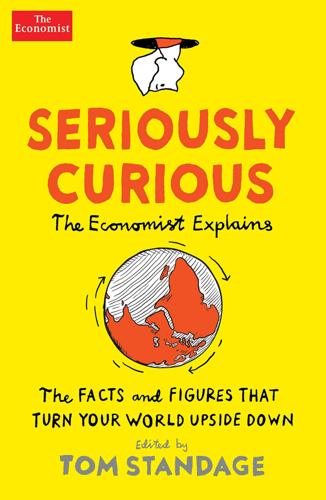
Seriously Curious: The Facts and Figures That Turn Our World Upside Down
by
Tom Standage
Published 27 Nov 2018
Birth rates in egalitarian and irreligious Scandinavia are comparable to those in Catholic Italy, where women are expected to care for both babies and older relatives. In short, variations in enthusiasm for capitalism and feminism do not explain variations in European birth rates, despite Mr Assange’s suggestion. Countries in eastern Europe and East Asia, moreover, tend to have both low birth rates and negligible numbers of immigrants. So the last step in Mr Assange’s equation, linking low birth rates to higher rates of migration, makes no sense at all. Why America still allows child marriage Child marriage is common in the developing world, where a third of girls, on average, marry before the age of 18. At that rate, another 1.2bn women will have got married as children by 2050.
…
Why young Britons are committing fewer crimes How car colours reflect Britain’s national mood Why Swedes overpay their taxes Mapping the world’s mega-rich Why nobody knows how many Nigerians there are Why Chinese children born in the year of the dragon are more successful Sexual selection: love, sex and marriage Why the sperm-bank business is booming How porn consumption changed during Hawaii’s false alarm Why transgender people are being sterilised in some European countries How opinions on acceptable male behaviour vary by age, sex and nationality What porn and listings sites reveal about Britain’s gay population Attitudes to same-sex relationships around the world Why couples do more housework than single people What men and women think about their partners’ careers and housework How fracking boosts birth rates What explains Europe’s low birth rates? Why America still allows child marriage Also on the menu: oddities of food and drink The surprising link between avocados and crime Why China’s dog-meat market has expanded Why obesity is a growing problem in poor countries The Argentine–American lemon war of 2001–2018 Which European country has the most craft breweries per person?
…
The policy prescriptions are not obvious. Whether or not people get married is their own business. But the finding does offer some comfort to those who worry that declining marriage rates are purely the product of worsening economic prospects for men. Clearly, some other factor is at play. What explains Europe’s low birth rates? Julian Assange, the founder of WikiLeaks and apparently an amateur demographer, is worried about Europe’s declining birth rate. In a tweet posted in 2017 he posited that “Capitalism + atheism + feminism = sterility = migration”, and noted that the leaders of Britain, France, Germany and Italy were all childless.
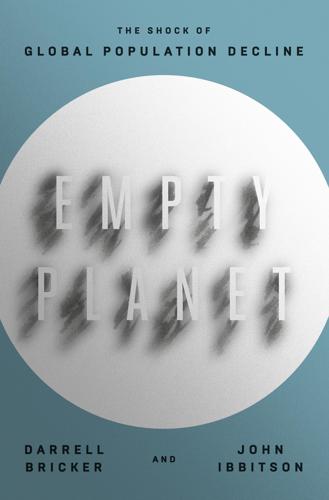
Empty Planet: The Shock of Global Population Decline
by
Darrell Bricker
and
John Ibbitson
Published 5 Feb 2019
Yes, China’s per capita GDP is only a third that of the U.S., but living standards have improved drastically and growth rates still outstrip those of any developed economy.283 The economist Branko Milanović believes the real gap in wages today is not between China and the United States, but between high-wage and low-wage earners in both countries.284 And the Chinese labor market is about to shrink, because the Chinese have largely given up on having babies. The world’s largest nation has a very low birth rate; it has had a low birth rate for decades. Because the Chinese don’t accept immigrants, inexorable math dictates a declining and rapidly aging population, a shrinking workforce, and an increasingly dependent society. China is becoming Japan.285 The only difference is that Japan became rich before it became old.
…
“They have a different culture, different religion, even different daily habits…Thank God Bulgaria so far is one of the most-well defended countries from Europe’s immigrant influx.”116 The Bulgarian population has already shrunk from almost nine million in 1989 to just over seven million today. It could lose another 30 percent by 2050, thanks to a low birth rate (1.5), an almost total absence of immigration, and migration of Bulgarians to other parts of Europe. The Bulgarians need newcomers. But they don’t care. They would rather disappear than live among strangers. Why are so many European countries, despite clear evidence that their populations are declining, or about to decline, reluctant to accept immigrants?
…
In 2015, Japan conferred citizenship on only 9,469 applicants.130 That was down from five years before; in 2010 the number was 13,072.131 2010 also happened to be the year that Japan’s population peaked, at 128,057,352. Five years later, it stood at 127,110,000. In only five years, Japan lost almost a million people even as it issued fewer new citizenships. That’s what happens when a country combines a low birth rate with anti-immigration policies. When describing the demography of Japan today, the word that often gets used is catastrophic.132 Consider: More than a quarter of all Japanese alive today are seniors, making Japan the oldest society on earth. There are more forty-year-old women than there are thirty-year-old women, who outnumber twenty-year-old women.
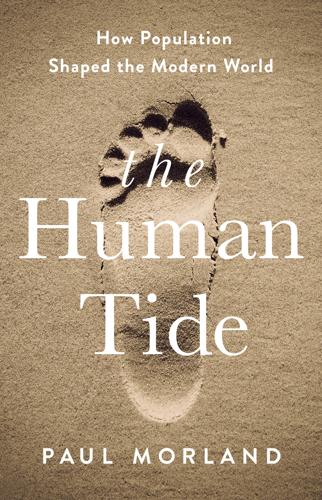
The Human Tide: How Population Shaped the Modern World
by
Paul Morland
Published 10 Jan 2019
My own family–who were living in Germany until the late 1930s–is a typical example of this: my great-grandparents, born in the middle of the nineteenth century, were mostly part of large families of around six children; my grandparents, born between the early 1880s and the period immediately before the First World War, had one or two siblings; and my parents, born in the 1920s and 1930s, were in one case a single child and in the other one of a pair. The perpetually fertile German over whom French writers and military planners had fretted a couple of decades earlier turned out to be a phantom. Concern about the low birth rate spanned the political spectrum; the left-wing SPD agreed ‘unequivocally that maternity was a woman’s social task’ and that ‘women had a duty as protectors and rearers of the species’.7 French women, meanwhile, were carrying on much as normal. French fertility rates in the interwar years fell only slightly, from a little under two and a half to a little over two.
…
Race, Pessimism and Policy Between the wars Europe went through what Britain had experienced before 1914, namely a steep fall in fertility rates and a sharp decline in population growth. As yet there wasn’t a complete understanding of what is now called the ‘demographic transition’, whereby a population will stabilise at a higher level once it has experienced growth as it moves from high birth rates and high death rates, through high birth rates and falling death rates, to low birth rates and low death rates. Before the First World War, besides the worry about rival nations’ population growth, there was concern about domestic fertility decline in the UK. US President Theodore ‘Teddy’ Roosevelt railed against ‘wilful sterility–the one sin for which the penalty is national death, racial suicide’.
…
in which he saw the problem of falling European fertility as being not so much a symptom of the ‘biological decadence of nations’ as it was of excessive individualism and what he called ‘the cult of self-development’.41 In Britain there continued to be an intra-European as well as a colonial aspect to population concerns, with the latter sometimes expressed in terms of ‘the white race’, which somewhat contradicted the worries closer to home. It was not always clear whether the falling birth rate in Germany, the low birth rate in France and the first signs of reductions in Russia were to be greeted as a reduction in the menace posed by European rivals or regretted as part of a general white decline. So far as Asian peoples were concerned, the Chinese and Indians represented ‘teeming millions’ while the Japanese represented a special threat since they had shown how rapidly Asians might adopt European practices and both expand their populations further and deploy European military technology and organisation against the Europeans.

The Lessons of History
by
Will Durant
and
Ariel Durant
Published 1 Jan 1968
She is more interested in the species than in the individual, and makes little difference between civilization and barbarism. She does not care that a high birth rate has usually accompanied a culturally low civilization, and a low birth rate a civilization culturally high; and she (here meaning Nature as the process of birth, variation, competition, selection, and survival) sees to it that a nation with a low birth rate shall be periodically chastened by some more virile and fertile group. Gaul survived against the Germans through the help of Roman legions in Caesar’s days, and through the help of British and American legions in our time.
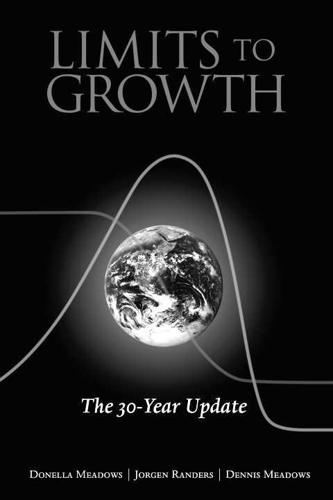
The Limits to Growth: The 30-Year Update
by
Donella H. Meadows
,
Jørgen Randers
and
Dennis L. Meadows
Published 15 Apr 2004
Figure 2-7 shows, for example, the correlation between per capita income (measured as the gross national income, or GNI,8 per person per year) and birth rates in various countries of the world. Clearly there is a strong relationship between high incomes and low birth rates. Just as clearly, especially at low incomes, there are striking exceptions. China, for example, has anomalously low birth rates for its level of income. Some Middle Eastern and African countries have anomalously high birth rates for theirs. FIGURE 2-7 Birth Rates and Gross National Income per Capita in 2001 As a society becomes wealthier, the birth rate of its people tends to decline.
…
This is by no means a definitive list. We include it here only to invite you to develop and enlarge it. • Sustainability, efficiency, sufficiency, equity, beauty, and community as the highest social values. • Material sufficiency and security for all. Therefore, by individual choice as well as communal norms, low birth rates and stable populations. • Work that dignifies people instead of demeaning them. Some way of providing incentives for people to give their best to society and to be rewarded for doing so, while ensuring that everyone will be provided for sufficiently under any circumstances. • Leaders who are honest, respectful, intelligent, humble, and more interested in doing their jobs than in keeping their jobs, more interested in serving society than in winning elections

The Coming of Neo-Feudalism: A Warning to the Global Middle Class
by
Joel Kotkin
Published 11 May 2020
The economist Robert Gordon notes that the newest wave of technology, while dramatically changing how we communicate and get information, has done very little to improve the material conditions of life, particularly in housing and transportation.15 The slowdown of population growth, especially in high-income countries, is another aspect of societal stagnation. In Europe, low birth rates have been common for almost a half century now. Europe’s population is on track to fall from 738 million to roughly 482 million by 2100. Retirees in a shrunken Germany will then outnumber children under the age of fifteen by a ratio of four to one.16 The demographic decline in East Asia has been, if anything, more dramatic.
…
From 20 to 30 percent of the working-age population in the EU15 and the United States, or up to 162 million individuals, are doing contract work.13 A similar trend shows up in developing countries such as Kenya, Nigeria, South Africa, Vietnam, Malaysia, and the Philippines.14 Even in Japan, long known as a country of secure long-term employment, the trend is toward part-time, conditional work. Today, some 40 percent of the Japanese workforce are “irregular,” also known as “freetors,” and this group is growing fast while the number of full-time jobs is decreasing. The instability in employment is widely seen as one reason for the country’s ultra-low birth rate.15 Many of today’s “precariat” work in the contingent “gig” economy, associated with firms such as Uber and Lyft. These companies and their progressive allies, including David Plouffe (who managed Barack Obama’s presidential campaign in 2008), like to speak of a “sharing” economy that is “democratizing capitalism” by returning control of the working day to the individual.
…
Ziliak, “Decomposing Trends in Income Volatility: The ‘Wide Ride’ at the Top and Bottom,” Economic Inquiry, January 2014, http://www.bradleyhardy.com/wp-content/uploads/2016/09/Hardy-Ziliak-2014-Final-EI.pdf. 12 Tavia Grant, “The continuing decline of the ‘middle-skill’ worker,” Globe and Mail, June 3, 2013, https://www.theglobeandmail.com/report-on-business/economy/jobs/the-continuing-decline-of-the-middle-skill-worker/article12303799/. 13 “Independent Work: Choice, Necessity, and the Gig Economy,” McKinsey & Company, October 2016, https://www.mckinsey.com/~/media/McKinsey/Featured%20Insights/Employment%20and%20Growth/Independent%20work%20Choice%20necessity%20and%20the%20gig%20economy/Independent-Work-Choice-necessity-and-the-gig-economy-Executive-Summary.ashx. 14 Annie Lowrey, “What the Gig Economy Looks Like Around the World,” Atlantic, April 13, 2017, https://www.theatlantic.com/business/archive/2017/04/gig-economy-global/522954/. 15 Alana Samuels, “The Mystery of Why Japanese People Are Having So Few Babies,” Atlantic, July 20, 2017, https://www.theatlantic.com/business/archive/2017/07/japan-mystery-low-birth-rate/534291/. 16 Alison Griswold, “People are joining the gig economy because of a powerful myth,” Quartz, May 31, 2018, https://qz.com/1293741/people-join-the-gig-economy-to-be-their-own-boss-but-the-algorithm-is-really-in-charge. 17 Nathan Heller, “Is the Gig Economy Working?” New Yorker, May 8, 2017, https://www.newyorker.com/magazine/2017/05/15/is-the-gig-economy-working; Jeff Daniels, “Nearly half of California’s gig economy workers struggling with poverty, new survey says,” CNBC, August 28, 2018, https://www.cnbc.com/2018/08/28/about-half-of-californias-gig-economy-workers-struggling-with-poverty.html; Leonid Bershidsky, “Gig-Economy Workers Are the Modern Proletariat,” Bloomberg, September 25, 2018, https://www.bloomberg.com/opinion/articles/2018-09-25/gig-economy-workers-are-last-of-marx-s-oppressed-proletarians. 18 Kate Aronoff, “How the On-Demand Economy Enables the Cycle of Racial Labor Discrimination,” Color Lines, July 5, 2017, https://www.colorlines.com/articles/how-demand-economy-enables-cycle-racial-labor-discrimination; Robert Reich, “The Share-the-Scraps Economy,” February 2, 2015, https://robertreich.org/post/109894095095. 19 Charles Murray, Coming Apart: The State of White America, 1960–2010 (New York: Crown Forum, 2012), 125–27; Maria Koulogou, “The New Inequality; The Decline of the Working Class Family,” Quillette, June 13, 2019, https://quillette.com/2019/06/13/the-new-inequality-the-decline-of-the-working-class-family/. 20 E.

Flowers of Fire: The Inside Story of South Korea's Feminist Movement and What It Means for Women's Rights Worldwide
by
Hawon Jung
Published 21 Mar 2023
The bad news? The country’s birth rate had become too low. By then, South Korea’s birth rate of 1.1 was not only way below the replacement rate of 2.1 but was one of the lowest in the world. Alarm grew over the impending population crisis, so much so that the welfare minister at the time lamented, “Low birth rates are scarier than North Korea’s nuclear program.”79 For the government, it was time to make another U-turn, turning off the valve again. By then, abortion was widely available in many clinics, albeit under the radar, while the authorities rarely bothered to enforce the law banning it—like it had done for decades.
…
But no one wanted to talk about it in public.” All of that changed in 2016 when the government made a renewed push to crack down on abortion. Unlike in the past, the attempt was met with loud resistance from a new generation of women unafraid to speak up. CHAPTER 8 By the late 2010s, South Korea’s low birth rate was no longer a threat of the distant future but an ongoing crisis. Despite the restrictions on abortions, the birth rate continued to spiral with no signs of changing course. Politicians, bureaucrats, and the media frantically debated how to push young people to have babies, warning of “the ticking time bomb” and “the national catastrophe.”95 Young women reaching childbearing age—survivors of the era of sex-selective abortions in the 1990s—suddenly found themselves being held up as the “last hope”96 to rescue their country from a looming population crisis by giving birth.
…
The tradition has drawn so much ire from wives that the number of divorces tends to rise after such holidays.125 Interestingly, the pattern vanished during the COVID-19 pandemic when the government urged families not to get together for the holidays.126 *It’s unclear exactly how much of the state budget has been spent on projects specifically tackling low birth rates. The official government data has been often criticized for covering projects that have little to do with the birth rates, such as those aimed at reducing alcoholism or promoting business startups. The estimate in this book is based on the state supports that directly target pregnant women and families with newborns, toddlers, and children, but it excludes broader supports for young people and the housing assistance for newlyweds that is hard to break down from the wider data.
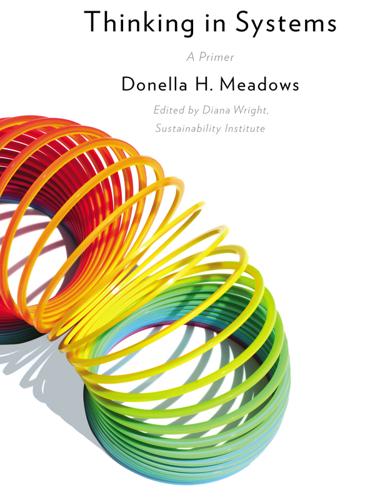
Thinking in Systems: A Primer
by
Meadows. Donella
and
Diana Wright
Published 3 Dec 2008
For example, a nation wanting to increase its birth rate might ask why families are having few children and discover that it isn’t because they don’t like children. Perhaps they haven’t the resources, the living space, the time, or the security to have more. Hungary, at the same time Romania was banning abortions, also was worried about its low birth rate—fearing an economic downturn could result from fewer people in the workforce. The Hungarian government discovered that cramped housing was one reason for small family size. The government devised a policy that rewarded larger families with more living space. This policy was only partially successful, because housing was not the only problem.
…
Unlike Romania and Hungary, the Swedish government assessed its goals and those of the population and decided that there was a basis of agreement, not on the size of the family, but on the quality of child care. Every child should be wanted and nurtured. No child should be in material need. Every child should have access to excellent education and health care. These were goals around which the government and the people could align themselves. The resulting policy looked strange during a time of low birth rate, because it included free contraceptives and abortion—because of the principle that every child should be wanted. The policy also included widespread sex education, easier divorce laws, free obstetrical care, support for families in need, and greatly increased investment in education and health care.4 Since then, the Swedish birth rate has gone up and down several times without causing panic in either direction, because the nation is focused on a far more important goal than the number of Swedes.
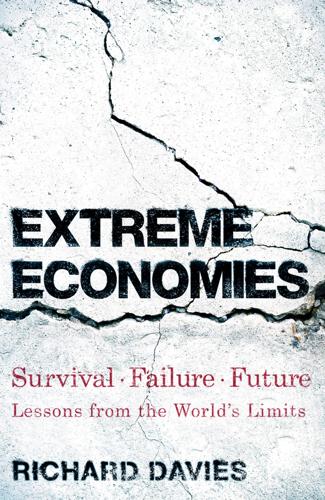
Extreme Economies: Survival, Failure, Future – Lessons From the World’s Limits
by
Richard Davies
Published 4 Sep 2019
By 2016 the number of Japanese citizens aged 100 or older had risen to 65,000 and the rude health of those in their eighties and nineties means that by 2040 the government predicts there will be 300,000 of them. Reaching a century no longer gets you in the local news in Japan, and the celebratory sakazuki cup is now silver-plated. The second factor that pushes up the average age of a place is a low birth rate. Here, there has been another global shift: WHO data shows that the birth rate has fallen by over 40 per cent since 1960. Long-run data explains the trend in Japan: in 1900 there was a population of around 44 million, families with five children were common and 1.4 million children were born.
…
Life in ageing Akita offers a series of warnings to the places that will come to mirror it, demographically, in the near future. The old-age economy brings new tensions – not just concern over government budgets, but stresses between husbands and wives, and between the young and old – that Japan’s closest followers, including South Korea and China, may experience. Partly driven by low birth rates, it also brings an acute sense of loss, akin to that seen in Glasgow, as towns and villages dwindle and die as they are beginning to in Italy and Portugal. Yet despite all these concerns, there is another side to the economics of ageing, and to travel in Japan’s most elderly places is also to discover a world of new, surprising and positive angles on this defining trend of the future economy.
…
Abercrombie, Sir Patrick 203 Aceh 2–39, 10, 331, 332, 333, 334, 335 ‘building back better’ 24–5, 29–31, 42 civil war 32–3 education 13, 31 financial system 20–22 history 17–18 Memorandum of Understanding (MOU) 32, 33 tsunami 2–3, 6, 12–14, 15, 16, 18–19, 23 ageing populations 6, 212–49, 331 agglomeration see industrial agglomeration AI see artificial intelligence Akita, Japan 212–49 ageing population/ low birth rate 7, 213–25, 227–49, 331 suicides 225–6 Allende, Salvador 296–8, 301 amoral familism 196, 202 Anglo-Dutch wars 25 Angola: Kongo people 83 Angola (Louisiana penitentiary) 5, 76–104, 331, 335, Angolite, The 80 Argentina 110, 144, 291, 303 Arkwright, Richard 267 Arrol, Sir William 191 artificial intelligence (AI) 245, 268–9, 270, 284, 286, 287, 378 automation: and job losses 253 see also technology Azraq refugee camp 57–67, 71, 72, 144, 334, 340, 348–9 Bajo Chiquito, Panama 106, 108–9, 1112, 133, 136, 139 Banda Aceh 13, 16, 18, 20, 26–7, 34–5 Bandal, Kinshasa 144, 162 Bandudu, Congo 164, 165 banks 97, 99 in Aceh 19, 21, 22 Chilean 296, 297, 302 in Kinshasa/ Congo 151, 158 online 99, 278 Panamanian 131 Barbour, Mary 203, 366 barter economy, prison 89–90 Bevan, Aneurin 201 birth rates, falling 215–16, 226–7, 233, 247 Blockbuster Video 97 blood circulation (William Harvey) 3–4 borders: and conservation of common resources 126–7 Borland, Francis: History of Darien 107 Brazil: ageing population 213, 214 Brazzaville, Congo 174–5 Bruce, Robert 203 Brumberg, Richard 218 buccaneers and Darien 112–14 business start-up rates 54 Calabria, negative social integration 195–6 Calton, Glasgow 179, 190, 191, 192 Cambridge University 26, 182 Cameron, Verney Lovett 141, 143, 149 cannabinoids, synthetic 93–4, 95–6, 352 cartels, Chilean 321–3 Casement, Roger: on Congo Free State 150 cash vs. barter 89–90 Castro, Fidel 298 Castro, Sergio de 301 centenarians, Japanese 215, 216 Chesterton, George Laval 77 Chicago Boys 294–5, 296, 300, 301, 314, 325 El Ladrillo (economic plan) 301–5, 315–16, 317, 323–4, 325–6 protests against 305, 317 Chile Allende period 296–8, 301 education 294, 295, 302, 304–5, 310, 311–12, 312, 313–17, 318, 324, 326, 327 national income 291–3 nationalization 296–7 Pinochet dictatorship 298, 300–1, 305, 322, 383 tsunami 15 see also Chicago Boys ‘Chilean Winter’ 317–18 Clyde shipyards 178–9, 181, 183–4, 185 Cold Bath Fields prison 91 Coleridge, Samuel Taylor 113 Colombian peace accord (2016) 111, 134 common resources and conservation 124–5 depletion paradox 122–39 overgrazed land 122–3 and self-regulation 125, 126–8 Confucian ethics 220 Congo, Democratic Republic of ‘Crisis’ 151–8 GDP per capita 153, 173 independence (1960) 151 unemployment 142–3 see also Kinshasa; Mobutu, Sese Seko; Zaire consumerism as slavery 319 copper mining 143, 151, 156, 296, 323–4 corruption 133 in Kinshasa 143, 145–6, 148, 159–61, 168, 333, 361 credit: and poverty 308–10 Crompton, Samuel 267 crop rotation 279 Cunard Line 185 currencies cacao beans 91 cigarette papers 91 cigarettes/tobacco 92, 95 coffee 77, 96, 100 commodities 90–91 ‘dot’ payment system 97–100 dual-currency system 166–7 ‘EMAK’ (edible mackerel) 92 postage stamps 92 in prisons 91–101 ramen noodles 92 roles played (Jevons) 90 on Rossel Island 91 salt 91 Yoruk people 91 Cut Nyak Dhien 35 Dael, Syria: refugees 42–4 Dagahaley settlement, Kenya 45, 46 Dampier, William 113, 114 Daraa: and Syrian civil war 44 Darien Gap 6, 106, 107–39, 332, 333, 334 borders and common resource conservation 126–7 buccaneers’ accounts 112–14 eco-tourism 132 environmental damage 6, 120–21, 129–31 ethnic rivalry 126–8 externalities 131, 138, 183, 186, 332 illegal immigrants 132–7 market failure 109–10, 122–3, 129, 138 Scottish disaster 114–15, 133, 137–8 Darien National Park 126, 132 deaths lonely 225, 226, 236, 237, 248 premature (‘Glasgow effect’) 192–3 suicide 194, 213, 224, 225–6, 236, 248, 366 see also life expectancy digital divide 254, 281, 377 digital ID 277, 279 digital infrastructure, Estonian 259 drugs in Angola (prison) 81, 82, 88, 93–4, 95–6, 97, 99, 100, 101, 352 in Chile 306, 310, 322 in Darien 110, 111, 128, 134, 135 in Scotland 191–2, 193 in Tallinn 206 Dunlop, John Boyd 150 Durkheim, Emile: La Suicide 194, 196, 206 e-democracy (Estonia) 284, 287 e-Residency (Estonia) 277–8, 279, 283, 287, 379 education in Aceh 13, 31 in Chile/Santiago 295, 302, 304–5, 310, 311–12, 312, 313–17, 326, 327 in Italy 195 in Japan 220, 223, 229 in Louisiana 81 in Zaatari camp 67, 71, 349 see also universities Embera tribe 108, 109, 111, 119, 127, 128, 129, 133, 136, 137, 138–9, 357 entrepreneurs 331 in Aceh 19, 22, 23, 24, 27, 30, 39 in Akita, Japan 236–7, 238 in Angola (prison) 89, 102–3 Chilean 295, 296 in Darien 5, 114 Estonian 270, 275, 278–9, 281 in Glasgow 181, 182 in Kinshasa 162, 171 in Zaatari camp 43, 46, 54, 55–8, 62–3, 71 environmental damage see Darien Gap Estonia 256–7, 259 Ajujaht competition 252, 260, 275, 276, 278, 283–3 companies 281 economic revival 275–87 e-Government services 254–5 as ESSR 257–9, 272–4 labour shortage 280 Russia border 271–2 Russian population 272–4, 281–3 technology 252–6, 259–87 externalities 183, 206 Darien Gap 131, 138, 183, 186, 332 Glasgow 183–4, 186, 189–90, 333 and markets 332 extractive economy 122–39 Fairfield Heritage 349 Fairfield shipyard 178, 186, 189, 200, 206 FARC guerrillas 111, 132, 133, 134–5, 137, 355, 357 Ffrench-Davis, Ricardo 302 Foljambe, Joseph 265–6 Force Publique 150 foreign aid 23, 27–9, 54, 170 foreign exchange traders 166–7 Franklin, Isaac 83 free markets 128, 131, 174, 296, 300–3, 316, 320, 326–7, 331–2, 356 Frente Amplio coalition 318, 384 Friedman, Milton 289, 295, 303, 319, 326, 383, 384 GAM (Gerakan Aceh Merdeka) freedom fighters 18, 32, 346 Gbadolite 159 GDP see Gross Domestic Product Gécamines 155–6 Geddes, Reay: report 189–90 gender roles, Japanese 223–4, 232 Germany 187, 195, 222, 227, 247, 249, 292, 302, 360 Glasgow 6–7, 176, 177–207, 333 culture 180 drug users 191–2 externalities 183–4, 186, 189–90, 333 population density 197 shipbuilding 178–9, 181, 184–6, 187–8, 189, 190–91, 199–200, 206–7, 333, 334 tenement homes and social capital 196, 197–202, 205, 335 unemployment 190 see also Calton; Gorbals; Govan and below Glasgow City Council (GCC) 202–4 Glasgow City Improvement Trust 202–3, 366 ‘Glasgow effect’, isolation 205–6 Glassford, John 181 Glenlee 179 gold in Aceh 17, 20–22, 37, 332, 334 in the Congo 143 in Darien 109, 113, 117, 120, 356 Golden Island 114–15 Good Neighbor Policy (USA) 294, 383 Goodyear, Charles 150 Gorbals, Glasgow 176, 191, 192, 204, 205, 367 Govan, Glasgow 176, 178, 184, 186, 192, 197–8, 201–3, 206, 207 Great Depression 26 Gross Domestic Product (GDP) 26 Aceh 27, 37–8 Chile 316 Congo 153, 173 Estonia 259 Hagadera refugee camp, Kenya 45 Han, Byung-Chul 319 Harberger, Arnold ‘Alito’ 295, 305, 326 Hargreaves, James 266, 267 Harris, Walter 115 Harvey, William 1, 3–4, 5, 6, 329, 330, 336 Heinla, Ahti 263–4, 268, 282, 284, 285 Hinohara, Shigeaki 211 housing 90 Aceh 12–13, 16, 19, 24, 26, 27, 28, 29–30, 26, 38, 39 Akita, Japan 223, 228, 229, 230, 232, 233, 236–7, 239, 248 Azraq and Zaatari camps 44, 45, 48, 54, 55, 59, 61, 63, 70, 71 Chile 296, 297, 300, 302, 204, 306, 207, 308, 326 Darien 118, 139 Glasgow 197–9, 202–6 Kinshasa 142 Louisiana 95, 102 human capital 38–9, 168, 305, 335, 346–7 human rights abuses 300–1 Hyakumoto, Natsue 235 ID cards, personal data 260–61 Ifo refugee camp, Kenya 45 incarceration rates, USA 76–7, 78 industrial agglomeration 182–6, 200, 206, 330–31, 333, 365 inequality 6, 18, 254, 331, 337 in Chile 6, 291–2, 292, 293, 297, 298, 304, 308, 311, 317, 318, 324–7 intergenerational (Japan) 221–3, 238, 248 informal economies 122–5, 214–15, 331, 333–4, 336 Aceh 21–2, 24, 30, 31, 34, 37 Akita 233, 248 Chile 297, 306–7, 310, 323 Darien 122, 128, 129 Estonia 258 and Glasgow 204, 206, 334 Italy 196, 336 Kinshasa 142, 146, 148, 163–6, 167–8, 170, 173–5, 334 in prisons 77, 78–9, 86–7, 91, 93, 96, 99, 100–1, 102 in Zaatari camp 43, 45, 47, 57, 61, 64, 71, 72, 86 Innophys 245 innovation in Chile 315 and currency 97, 99–100 and economies 43, 79, 80, 87, 100, 122, 162, 333, 334 in Estonia 252, 256–7, 258–87 in Glasgow 179, 180, 182, 185, 188, 192, 201 technological 97–8, 183, 187, 252, 256–7, 258–87 intergenerational inequality (Japan) 221–3, 238, 248 International African Association (IAA) 149 International Cooperation Administration (ICA) 294 International Monetary Fund 303 inventions 265–6 in Estonia 252–3, 260, 265, 275–6, 282–3 isolation, ‘Glasgow effect’ 205–6 Italy 195–6, 201, 202, 335–6, 366 ageing population 213, 220, 222, 243, 331 population decline 227, 230, 233, 249 ivory trade 149 Jackie Chan Village 35–7, 39 Jackson, Giorgio 317–20 Jadue, Daniel 322, 332 Japan ageing population 6, 213–25, 227–49, 331 common forest conservation 124, 125 education 220, 223, 229 shipyards innovation/ competition 187–8, 189 tsunamis 15 Japan Football Association (JFA) 212–13 Jendi, Mohammed 54–5, 56, 71 Jevons, William Stanley 75, 89–90, 99, 352 Kabila family 154, 161, 162, 173 Kajiwara, Kenji 238 Kakuma refugee camp, Kenya 45 Kalanick, Travis 57 Kasa-Vubu, Joseph 151 Katanga 143, 151 Katumba refugee camp, Tanzania 45 Kenya: refugee camps 45, 46 Keynes, John Maynard 5, 7 Kinshasa 6, 140, 141–75, corruption 143, 145–6, 148, 159–61, 168, 333, 361 informal economy 142, 146, 148, 163, 166, 167–8, 170, 173, 334 natural wealth 143 pillages 157–8 police 159–61 roads as informal markets 163–6 tax system 145–6, 147–8, 16 Kirkaldy, David 4, 5, 6, 330 Kuala Lumpur 293 Kuna tribe 126, 340 Laar, Mart 258 labour pools, industrial agglomeration 183, 184–5, 200 Ladrillo, El see Chicago Boys Lagos 293 Lampuuk 2–3, 6, 13, 14, 22–3, 26, 32, 33, 35, 37, 345 Lancashire 266, 267 Las Condes 288, 290, 293, 304, 306, 307, 308, 309, 321, 322, 325 Lasnamäe, Tallinn 272, 281 Le Corbusier: Cité radieuse 203 Leontief, Wassily: Machines and Man 251, 377 Leopold II, King of the Belgians 149–50 Lhokgna 10, 12–13, 14, 26, 27–8, 29, 31, 33, 34, 35, 38, 345 life-cycle hypothesis 218–19, 248 life expectancy Glasgow 179, 190, 191–3 Japan 215 Russia 273–4 Swaziland 179 Lima 293 Liverpool 89, 177, 192, 193, 205–6 Livingstone, David 148–9 Lloyd, William Forster 122–3 lonely deaths 225, 226, 236, 237, 248 Louisiana 74, 76, 81 Department of Public Safety and Corrections 83 Prison Enterprises 83–4, 85, 351 State Penitentiary see Angola Lüders, Rolf 293, 295, 304, 305, 325 Lumumba, Patrice 151 machine learning 268–70 Makarova, Marianna 272, 274 Malacca Strait 10, 17,. 18, 35, 39 Malahayati, Admiral Laksamana 34–5 Maluku steel mill, Kinshasa 155, 156–7 Manchester 192, 193, 205–6 market economies Chile 297, 302, 305, 317 prison 78, 79, 87, 89, 100, 101, 103 markets 71, 122, 332–3, 336 Aceh 20–22, 36–7, 38, 144, 331 Azraq camp 62–4, 71, 144 Chile 295, 296, 297, 298–9, 304, 309, 319, 320–23 Darien 122, 126–7, 128, 129, 131, 138 free 128, 131, 174, 296, 300–3, 316, 320, 326–7, 331–2, 356 Glasgow 181, 190 Japan 232, 233, 248, 249 Kinshasa 143, 145, 146–7, 162, 163–6, 167, 173, 174 Zaatari supermarkets 48–53, 64, 348 Marshall, Alfred 182–3, 184, 185, 186, 187, 189, 190, 194, 200, 206, 329, 330, 365 Maslow, Abraham 41, 65–7, 68, 71, 72, 286, 319, 326, 349 Meikle, Andrew 266 Melvin, Jean 197, 198, 199, 200, 201, 202, 205 ménage lending system 201, 334 Menger, Carl 90, 99, 352 Michelin brothers 150 military coup, Pinochet’s 298 Mill, John Stuart 11, 38, 335, 346–7 minimum wages 94, 267, 296, 307–8, 310 Mishamo refugee camp, Tanzania 45 Mississippi River 74, 76 Mobutu, Sese Seko (formerly Joseph-Désiré) 141, 151–2, 154–9, 161, 162, 166, 173, 297, 333, 360–61 Modigliani, Franco 218–19, 372 Mojo (synthetic cannabis) 92–4, 95–6, 97 monopolies, facilitated 319 Montgomery, Hugh 3–4 Moore, Gordon 269 Morgan, Henry 112–13 Narva, Estonia 250, 271, 272, 274, 283, 287, 378 National Health Service 201–2 nationalization 187, 296, 301–2, 383 natural disasters: and economic growth 24–5 New Caledonia 114, 356 New Orleans 74, 76, 79, 93, 101, 102, 103 Ninagawa, Yukio 234–5 norms, economics and 196, 200, 201, 323, 334, 336 obesity 81, 309, 326, 351 opportunism: and depletion of common resources 126–38 Organization for Economic Cooperation and Development (OECD) 291, 316, 326, 377 Ostrom, Elinor 123–5, 137 Pan-American Highway 106, 110, 111, 115–17, 118–19, 121, 139, 355 Panama 106, 108-9, 110, 111, 113, 117, 118, 121, 130, 131, 356–7 see also Darien Gap; FARC guerrillas Panian refugee camp, Pakistan 45 Paro robot 243–5 Paterson, William: A Proposal to Plant a Colony in Darien 107 pawn shops 200, 334, 367 Penguins’ Revolution 317 pepper: global boom 17, 345 Pepper robot 246–7 personal data 260–61 Petty, William 25–6, 38n, 346 Piñera, Sebastián 309 Pinochet, General Augustine 298, 300–1, 305, 322, 383 pirate economies see informal economies population 122, 125, 330, 347 Aceh 14, 16, 18 Chile/Santiago 291, 324 China 76 Congo/Kinshasa 143, 150 Dael 42 Darien Gap 126, 128 Estonia 255, 256, 265, 272 Glasgow 179, 197 Greece 238 Japan 226–7, 229 Portugal 238 refugee camps 44, 45, 49, 57, 348 Sweden 238 US prisons 76–7 see also ageing populations Portugal 213, 227, 230, 233, 238, 243, 249, 291, 331, 351, 360 poverty Chile 291, 293, 300, 301, 303–4, 305, 208, 311. 15. 326 Congo/Kinshasa 143, 144, 160, 169, 11, 173 Glasgow 192 Italy 195 Japan 220, 226, 233, 248 Louisiana 81, 351 prices 147–8, 302 Pride of York 207 Prisoner’s Dilemma 174 privatization 169, 173, 301–2, 315, 326, 361 Pugnido refugee camp, Ethiopia 45 Putnam, Robert 195–6, 201, 202, 335–6, 366 Rahmatullah mosque, Aceh 14 rainforest destruction 121, 128–31 Rand, Rait 260, 275–6, 283, 284 Red Road Estate, Glasgow 203 refugee camps 45, 46, 55, 173 see also Azraq; Zaatari Reid, Alexander 180 resilience 3, 5, 6, 13, 16, 22, 31, 34, 35–9, 78, 103, 109, 122, 123, 146, 170, 248, 293, 325, 333–7, 384 Revolutionary Armed Forces of Colombia see FARC Rideau, Wilbert 79–80, 82, 87–8, 100, 351 Rio Chucunaque 117, 119 robotics/ robots and care 243–4, 245–7, 248 delivery robots 262–4 for egalitarian economies 284–5 human overseers/ minders 280 ‘last-mile problem’ 264 machine learning 268–70 Sony AIBO robotic dogs 245 trams, driverless 264 Roosevelt, Franklin D. 294, 356 rosewood trees 120, 128, 138 rubber trade 149–50 Russian-Estonians 272–4, 281–4, 286–7 salarymen, retired 223–4, 228, 248 Samuel, Arthur 269 Santiago 7, 288, 289–327 see also Chile schools/ schooling markets 165, 311–15 Scotland Darien disaster 114–15, 133, 137–8 see also Glasgow self-governance 125–8 shipbuilding 178–9, 181, 184–6, 187–8, 189–91, 199–200 Sikkut, Siim 259, 277, 284 Skype 254, 263, slavery 82–6 smuggling 42, 46–8, 68 social capital 195–6, 199, 200, 202, 323, 325, 335–6, 366 social inequality 142–3, 324–5 Somalia 15 South Korea 213, 214, 220, 227, 233, 247, 319, 373 Spain 115, 137, 213, 222, 227, 243, 331 Spice (synthetic cannabis) 352 Spice Islands 17 Spiers, Alexander 181 Spinning Jenny 267, 269, 274, 378 Sri Lanka 15, 17, 49 Stanley, Henry Morton 148–9 Stanyforth, Disney 266 Starship Technologies 262–4, 269, 280 stateless people 255 store cards, prepaid 97–8 students 81, 168, 218, 221, 223, 236–7, 238, 248, 282, 283, 294–5, 304–5, 311–14, 315–18 suicide 194, 213, 224, 225–6, 236, 248, 366 Sumatra 17-18, see also Aceh supermarkets, Zaatari 48–53, 64, 348 Swing Riots 266, 378 synthetic cannabis see Mojo; Spice Takahashi, Kiyoshi 235, 236 Tallinn 7, 250, 251–87 Russian population 272–4, 281–4, 286–7 start-up paradise 254 Tallinn, Harry 278, 282–3 Tanzania: refugee camps 45 taxation 25, 346 Aceh 32 Chile 295, 302, 307, 315–17, 325 Darien 111, 130 Estonia 256–7, 259, 273, 278, 287 Glasgow 190 Japan 220, 231 Kinshasa 145–6, 147–8, 151, 152, 158, 161–2, 165, 167–8, 169, 173–4 in Zaatari refugee camp 48, 56 Tay Bridge collapse 5 teak trees 116, 130–31, 138, 333, 356, 357 technology and inequality 253–4 innovation 97–8, 183, 187, 256–7, 258–9 spill-overs 183, 189 and unemployment 253, 262, 270, 279, 286, 287, 377, 379 tectonic plates 13–14 tenement buildings, Glaswegian 196, 197–202, 205, 335 Thailand 15, 144, 213 tobacco 77, 85–6, 92, 95, 100, 143, 156, 181, 191, 202, 365 Tomaya, Yoichi 235 Törbel, Switzerland: forest conservation 124 towerblocks 203, 204, 205 trade in prison 97–100 in Zaatari camp 43–57, 67–70 see also markets traditions, economic resilience and 21, 22, 24, 34, 196, 336 trust 148, 150, 174, 196, 199, 201, 206, 248, 261, 295, 321, 323, 325, 335 Tshisekedi, Félix 154 tsunamis 2–3, 12–14, 15, 16, 18–19, 22–3, 25 Tull, Jethrow 266 Turkey 28, 58, 144, 213 Uber 57 Ukegawa, Sachiko 234 underground economies 77–9, 87–101 see also informal economies unemployment 64–5, 142–3, 190, 275 Chile 290, 297, 302, 307, 311 Congo 142, 359 Estonia 270, 273, 275, 279, 283, 379 Glasgow 179, 190, 191 and technology 253, 262, 270, 279, 286, 287, 377, 379 United Kingdom 4, 18, 26, 181, 187, 188, 199, 213, 223, 278, 335 agriculture 265, 267 housing 232 jails 86, 91, 96, 352 National Health Service 201, 203 population 226 and technology 253, 254, 257, 260, 262, 264 see also Glasgow; Scotland United Nations High Commissioner for Refugees (UNHCR) 44, 46, 48, 54, 57, 72, 348 World Food Programme (WFP), and Zaatari 48, 49–50 universities Aceh 13, 33, 34 Akita, Japan 221, 223 Chile 294, 305, 313, 314, 315, 316–17, 318, 324, 326 Congo/Kinshasa 151, 160, 166, 168 Estonia 275, 282, 283 Upper Clyde Shipbuilders (UCS) 189 urbanization: and agglomeration forces 330–31 United States 26, 54, 76, 83, 93, 213, 223, 253, 262, 279, 292, 294, 297–8 prisons 76–7, 78, 81, 91–2, see also Angola population 226 and technology 260, 262, 264, 267, 269, 276 USAID 28, 29 Valdez, Samuel 121, 128–9, 130 Vallejo, Camila 317–18, 384 Van Gogh, Vincent 180 Vatter, Ott 277, 278 Viik, Linnar 257, 258–60, 261–2 Wafer, Lionel 113–14, 134, 355 Waisbluth, Mario 313 Walpole, Sir Spencer: A History of England 177 Walsh, David: History, Politics and Vulnerability … 177 Watanabe, Hiroshi 234 wealth 4–5, 159, 218–19, 324–5, 329, 334–6 nation’s 25, 38n, 346–7 natural 109, 132, 143 workforce 184–5, 264–8, 275, 297 World Bank 303, 305, 346 World Health Organization (WHO) 63, 215 World Trade Organization 303 Wounan tribe 126, 127 X-Road data system 261, 274–5, 279, 283, 377 Y Combinator 252 Yamamoto, Ryo 236–7 Yaviza, Panama 110, 111, 116–20, 127, 132, 135, 138, 144, 356 Yida refuge camp, South Sudan 45 Zaatari Syrian refugee camp 6, 40, 41–73, 86, 89, 100, 163, 173, 308, 331, 332, 334, 335, 348, 349 declining population 57 education 67, 71, 349 informal economy 43, 45, 47, 57, 61, 64, 71, 72, 86 smuggler children 42, 46–8, 68 supermarkets 48–53, 64, 348 trade development 43–57, 67–70, 71, 72 UNHCR cedes control 44–6 Zaire 152, 154, 155–6, 159, 361 Zorrones 324 TRANSWORLD PUBLISHERS 61–63 Uxbridge Road, London W5 5SA penguin.co.uk Transworld is part of the Penguin Random House group of companies whose addresses can be found at global.penguinrandomhouse.com.

The Panic Virus: The True Story Behind the Vaccine-Autism Controversy
by
Seth Mnookin
Published 3 Jan 2012
He was a full pound less than his brother; still, the doctors predicted he’d need to stay in the hospital for only a couple of extra days. Bill, however, was a different story altogether. At just barely three pounds, he fell between what’s referred to as Very Low Birth Weight (less than three pounds, four ounces) and Extremely Low Birth Rate (less than two pounds, three ounces). Whatever the official designation, his size put him at risk for a wide range of immediate complications and lifelong health problems. For four weeks after Fred and Jamie were discharged, Bill remained under constant watch at Lenox Hill Hospital’s Neonatal Intensive Care Unit on Manhattan’s Upper East Side.
…
.: of 1976, 65 of 2000, 204 of 2008, 210 electric waves, 156–57 Eli Lilly, 204, 209 Elliot (patient), 192 emotional disabilities, 76 emotions: decision making and, 192–93 parenting and, 266 empiricism, 81n Empty Fortress, The (Bettelheim), 78 Enayati, Albert, 142 encephalopathy, 190, 219 endoscopy, 185–86, 190, 234, 236 Environmental Protection Agency (EPA), 123, 124, 125, 226 EOHarm, 211–12, 239–43, 245 Epidemic Intelligence Service (EIS), 54 epidemiology, 79, 152 dangers of mercury and, 121 effects of mercury in vaccines and, 150–52 evidence in Cedillo trial and, 295 IOM committee review of, 170–71, 215 MMR reports and, 166–67 Morgellons and, 96n pitfalls of amateur, 138–40 safety of vaccines and, 170–71 studies of Danish children and, 154, 166 epiglottis, underdeveloped, 276 epinephrine (adrenaline), 93 Erie, Pa., 188–89 Escola, Gladys, 51 ethyl alcohol (ethanol), 122n ethylmercury, 119, 122–24, 131, 226 half-life of, 151 methylmercury compared with, 122, 128–29, 144 see also thimerosal Europe, 28, 37, 126 European Union, 102 Evidence of Harm (Kirby), 206–18, 221, 242, 246, 257, 303 title of, 207, 213 evolution, 158, 193, 197n, 307 expectation bias, 194 Extremely Low Birth Rate, 135 F=ma, 156, 157 faith-based metaphysics, 268–69 falsifiability, theory of, 155–56 Faroe Islands, 121, 122 FBI, 200 FDA Modernization Act (1997), 123–26 fecal-oral route of transmission, 39–40 Federal Emergency Management Agency, 8 Fenn, Elizabeth, 27 Festinger, Leon, 15 fever, 69, 99, 181, 182, 183, 218, 245–46, 276 Fineberg, Harvey, 215–17 Fineberg, Kenneth, 148n Fisher, Barbara Loe, 73–75, 101, 127–28, 149, 188, 196 at AutismOne conference, 14 IOM committee review and, 171–72 lawsuits and, 74n on pharmaceutical companies, 35 phone tapping and, 199 as Wakefield supporter, 114n Fisher, Chris, 72–73 Fisher, Meg, 305 Fitness to Practise Panel, 299 Fletcher, Jackie, 101–2 Fletcher, John, 102 Fletcher, Robert, 101 Florey, Howard, 36 Florida Medical Board, 235 flu, 42, 62–66, 181, 271, 276 1918 pandemic of, 62 swine, 63–66, 147 fluoride, in drinking water, 57–60 anti-fluoride activists and, 58, 59 fluorine, 58 flu vaccine, 7, 10, 63–66 “Flu Vaccine” (pamphlet), 92 Fombonne, Eric, 290 food, mercury in, 121, 126 Food and Drug Administration (FDA), 72, 123–26, 216n, 226, 284, 288 Center for Biologics Evaluation and Research (CBER) of, 123, 125 vaccine injuries and, 148 Ford, Gerald, 62–63, 65–66 formaldehyde, 265 Fort Dix, N.J., 62 Foster, Vince, 130, 168 Fox News, 258 France, 40n, 88 Francis, Thomas, 43–47, 49–50 fraud, medical, 10, 199 Freud, Sigmund, 79 Freudianism, 268 “Front Line Response to The Vaccine Book” (Bowman), 267 functional magnetic resonance imaging (fMRI), 84–85, 86 Galileo, 94n, 155 Galileo Gambit, 94n Gallup poll, 43 gay rights movement, 80 Geier, David, 16–17, 174–77, 209–10, 216n, 217, 221 Geier, Mark, 16–17, 174–77, 216n, 217 Kennedy and, 221 Kirby’s views on, 208, 209–10 on population-based thimerosal studies, 199 testimony in vaccine-related lawsuits and, 17n, 175 gender, case series and, 110 General Medical Council (GMC), 236–37, 299–304, 306 Generation Rescue, 214, 221, 228, 258 Genetic Centers of America, 208 genetics, autism and, 135, 136, 242, 243 Gingrich, Newt, 130 GlaxoSmithKline, 116n global warming, 307 glutathione, 260 Goddard Institute for Space Studies, 307 Goldenberg, Cindy, 182 Goldenberg, Garrett, 182 Golkiewicz, Gary, 180, 284 Good Morning America (TV show), 88, 90, 256, 258, 281 Google, 253–54 Gordon, Jay (Dr.
…
News & World Report, 199 utopian movements, 33 vaccination laws, 55–56, 67, 153 exemptions to, 75, 305 Vaccine (Allen), 34 Vaccine Act, see National Childhood Vaccine Injury Act Vaccine Adverse Event Reporting System (VAERS), 148, 153, 179 Vaccine Book, The (Sears), 266, 267, 273 Vaccine Court, 148, 175–81, 183, 199, 211n Chin-Caplan’s law firm bill to, 293n Compensation for “pain and suffering” and, 179 “no fault” standard and, 178 Omnibus Autism Proceeding and, 180–81, 190–91, 283–97 Poling case in, 218–19 Vaccine Damage Pay Unit, 102 Vaccine Injury Compensation Act, see National Childhood Vaccine Injury Act vaccines, vaccination: autism linked with, see autism, vaccines linked with compensation systems for, 146–48, 175, 178, 179, 180 delayed, 112 distribution vs. administration of, 176–77 effect of autism advocacy groups on safety of, 169 effectiveness of, 30–31 fall in rates of, 5, 7, 19, 61, 66, 277, 305–6 Kennedy’s views on safety of, 226 lawsuits related to, see lawsuits, vaccine-related neurological damage linked with, 150, 151, 213, 221 paradox of, 56–57 poor people and, 56 prices of, 179 reasons for lack of benefits from, 32 resistance to, see anti-vaccine movement whole cell, 60–61, 277 see also specific vaccines Vaccines (Offit), 128 Vaccine Safety Datalink (VSD), 149–50, 152, 167 Vanity Fair, 74n Verstraeten, Thomas, 150–52, 164, 167 Very Low Birth Rate, 135 Viagra, 212–13 Vietnam War, 62 View, The (TV show), 281 viruses, 18 see also specific viruses vitamins, 262 vomiting, 99, 119, 143–44, 276 Voodoo Histories (Aaronovitch), 237 Wakefield, Andrew, 5–6, 7, 14, 103–17, 148, 160–62, 186–90, 234–38, 284, 289n, 292, 306 at ARI/DAN! conference, 185, 291, 296, 303 Crohn’s disease and, 103–5 financial support for, 229, 238 GMC hearings and, 299–304 GMC investigation of, 236–37 Krigsman’s relationship with, 234–35, 238, 291 lab used by, 186, 291 Lancet paper of (1998), 5, 106–17, 150, 160, 172, 174, 179, 189, 229–30, 236, 291, 299, 302 use of anesthesia on children and, 236 Walk for Autism Research, 230 Wall Street Journal, The, 167–69 Ward, Walter, 50 Washington, George, 27–29 Washington, Lawrence, 27 Washington, University of, School of Medicine of, 171 Washington Post, The, 66, 69–70, 92–95, 130n “Watch What You Think,” 85 water, fluoride in, 57–60, 110n weapons of mass destruction (WMDs), 9 West Islip Breast Cancer Coalition, 139 West Virginia, 75 WFAN-New York, 212 whale meat, 121 When Prophecy Fails (Festinger), 15 white blood cells, 30, 103, 277 white swan theory, 155–56 whooping cough, see pertussis Winfrey, Oprah, 244–45, 253–56, 269–71, 282 Winkler, Pam, 94 Wired, 74n Wisconsin, 19, 83 women: advanced maternal age of, 84 benefits of vaccination for, 56 opioid excess theory and, 107n as refrigerator mothers, 77, 78 thyroid problems in, 269 in World War II, 78–79 see also pregnancy World Autism Awareness Day (2008), 257 World Health Organization (WHO), 19, 100, 223–24 World of the Autistic Child, The (Siegel), 188 World War I, 36, 263 World War II, 36, 37–38, 61, 78–79 WRC-TV, 67, 72 Wright, Bob, 232–33, 239–42, 247, 248 Wright, Katie, 231–34, 238, 240–48, 254 son Christian and, 231–34, 238–43, 245–46 Wright, Suzanne, 232–33, 234, 239–42, 247 Wyeth Pharmaceuticals, 54, 64, 147, 150, 175 Wymore, Randy, 90–91 Yale University, 171 yellow fever vaccinations, 37–38 Young, Bobby, 68, 71 Yuma, Ariz., 181, 182 Zuckerman, Arie, 108
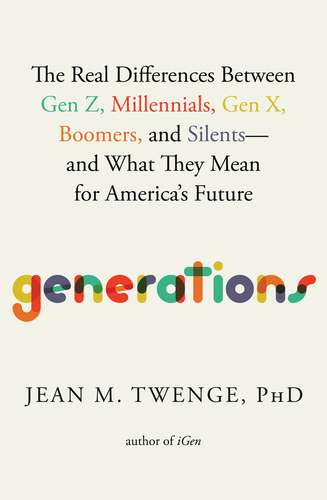
Generations: The Real Differences Between Gen Z, Millennials, Gen X, Boomers, and Silents—and What They Mean for America's Future
by
Jean M. Twenge
Published 25 Apr 2023
Until March 2022, when many mask mandates were lifted, Polars born after 2015 had never gone to school without masks in the states and cities that required them. Polars born after March 2020 have lived their entire lives in the era of COVID-19. That does not mean they are doomed. This book began with the story of the Silent generation, another low-birth-rate generation born in times of calamity—the Great Depression and World War II. Silents went on to stable and prosperous lives, building families and making great progress in the civil rights and women’s movements. Perhaps growing up in a time of turmoil will make Polars stronger, and ready to lead the country into better times ahead.
…
The demographic makeup of the country would still change—less in terms of age, but more in terms of culture and ethnic makeup. However, immigration slowed considerably after the mid-2010s (due to Trump administration policies as well as pandemic restrictions), so it would have to speed up quickly to make much difference in the 2020s. One view of a future after low birth rates can be seen in Japan, where fertility has been below replacement since the mid-1970s. After booming in the 1980s, the country experienced both inflation and poor economic performance during the 1990s, now known as Japan’s “Lost Decade.” The country’s economy never reached the heights of the 1980s again, and the Japanese economy is predicted to contract with each coming year as their population ages and its productivity and spending both slow.
…
In the Google Books database, the phrase “pet parent” did not exist in American books until 1995, was barely used until 2004, and then tripled in use between 2012 and 2019. The word furbaby (meaning a dog or cat one regards as a surrogate child) first appeared in American books in 1997, with use quadrupling between 2012 and 2019. Other consequences of low birth rates will require adjustments across businesses and organizations. With fewer children, school and college enrollment will decline. Demand for children’s products will atrophy. Twenty-five years on, there will be less demand for apartments, and a few years after that, less demand for houses. With more people working from home, however, it’s likely people will still want relatively large homes—but more bedrooms will have desks and circle lights instead of twin beds and soccer trophies.

After Europe
by
Ivan Krastev
Published 7 May 2017
It is thus not surprising that the demographic imagination shapes not only society’s hostilities to foreigners but also its negative reactions to social changes like gay marriage. Postcommunist societies, most of which are very secular as a rule, are quite tolerant when it comes to sexual life. But for many conservatives, gay marriages signify fewer kids and further demographic decline. For an eastern European nation haunted by low birth rates and migration, the endorsement of gay culture is like endorsing your own disappearance. The demand of central Europeans that borders be closed is also a belated reaction to the impact of emigration from the region that followed their opening in 1989. In a popular joke, three Bulgarian men dressed in Japanese costumes and armed with swords walk on the streets of Sofia: “Who are you and what do you want?”

The Smart Wife: Why Siri, Alexa, and Other Smart Home Devices Need a Feminist Reboot
by
Yolande Strengers
and
Jenny Kennedy
Published 14 Apr 2020
Some scholars are already considering how these smart wives will affect our politics, economy, and society at large. Sone and Robertson, for example, separately point out how the vision for Japanese robotics is grounded in a political landscape featuring an aging population, low birth rate, apathy toward marriage among young people, and government focused on modernization and progress. Japan’s low birth rate has been attributed to a range of overlapping issues, including the increased costs of living and education, lack of public childcare facilities, extremely long working hours with unpaid overtime, and emergence of a “just-in-time” workforce that has replaced regular employees.98 Japanese men and women’s growing disinterest in or refusal of marriage, as well as their reluctance to have children, reflects their resistance to the sexist and unequal roles afforded them in the Japanese social system.99 Within this context, Japan’s push for social robots that provide care reflects some interesting political and market objectives.

Boom: Bubbles and the End of Stagnation
by
Byrne Hobart
and
Tobias Huber
Published 29 Oct 2024
According to this view, the rate of progress is now slowing down and mean-reverting to historical norms. We can call this the natural theory of stagnation. Breaking Cowen’s and Gordon’s arguments down, we detect four structural impediments to innovation. First is the dynamics of demographics: A combination of aging and low birth rates tends to result in slowed growth, since older people usually spend less than younger people and are less productive. 15 Families with kids also spend more, whereas younger people without children contribute less to economic activity. Furthermore, older people have high health care costs and pension liabilities. 16 A higher-order effect of these trends, as we’ll detail later in this chapter, is a rising societal aversion to risk and a culture that is increasingly cautious and complacent.
…
Someone who makes a billion dollars in a single year and spends $50 million of it on a new mansion is still saving 95 percent of their resources. Population aging thus contributes to concentrations of wealth. As a result, capital is less likely to fund novel ideas simply because so much of it lies dormant. 32 Finally, the low birth rate means that younger workers come at a premium, driving up wages and reducing spending elsewhere, including on innovation. As the economist Julian Simon famously argued in his anti-Malthusian response to two bestselling and highly influential environmental doomer manifestos—Paul Ehrlich’s The Population Bomb and the Club of Rome’s The Limits to Growth—despite limited or finite physical resources, continuous population growth and human ingenuity represents the ultimate resource for sustained technological progress.
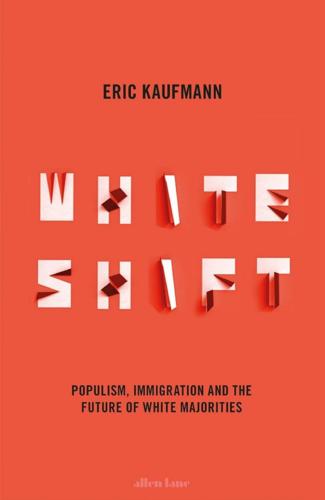
Whiteshift: Populism, Immigration and the Future of White Majorities
by
Eric Kaufmann
Published 24 Oct 2018
Even here, however, it took from the 1970s until 2014 for immigration from Mexico to the United States to subside, with hundreds of thousands arriving each year. In Europe, the exodus from Bulgaria and Romania began slowing in 2009 after around 2 million of their combined 28 million population had left, though more continue to arrive. These countries have incomes above $7,000 per capita, ageing populations and extremely low birth rates. Were this not the case, a much larger share would undoubtedly have emigrated.52 The economic and demographic gradient between the north and south shores of the Mediterranean is much wider than that separating Eastern and Western Europe. Those who argue that an open door will result in people moving seasonally in search of work without settling permanently rest their case on evidence from the US.53 While it is true that many Mexican workers prior to the 1920s returned after working seasonally, this was largely because workers were mainly male.
…
However, as enthusiasm for separatism fell from nearly 50 per cent in 1995 into the low 30s by the 2000s, ethno-traditional nationalism began to emerge. Immigration to Quebec has been lower than in English Canada, thus the rate of ethnic change has been more gradual. On the other hand, like other ex-Catholic European countries, the province has a relatively low birth rate. By 2016, those of non-European origin comprised around 15 per cent of the province’s population, including a small but growing Muslim share of 3 per cent. Most immigrants congregate in Greater Montreal. The Montreal area is not changing as quickly as Toronto or Vancouver, and is predicted to remain nearly 70 per cent white in 2031 at a time when metropolitan Toronto and Vancouver will be only 30–40 per cent white.41 Nevertheless, the ethnic shifts which are steadily changing Quebec are changing provincial politics.
…
These issues were gaining salience: around 20 per cent of those polled said C-62 and immigration would rank as ‘one of the most important factors’ deciding their vote in the 2018 provincial election.48 The poll also found that the CAQ’s Legault had the strongest net approval rating (+14 per cent) while Couillard’s, the Liberal premier, was –19 per cent and the Parti Québécois’s leader, Jean-François Lisée, was rated –16 per cent. By late June of 2018, ahead of the autumn election, the CAQ led the polls with 39 per cent support, the highest ever for the party. Among the French-speaking majority, its lead over the second-place Liberals was 48–23.49 With low birth rates working against the French-Canadians and a continued flow of immigrants arriving in the province, cultural questions of immigration and Islam are poised to become higher-profile issues in provincial politics. CONTINENTAL DIVIDE: ENGLISH CANADA AND THE UNITED STATES Immigration opinion is similar on both sides of the Canada–US border but where things differ is that immigration has been politicized by the American, but not the Canadian, right.
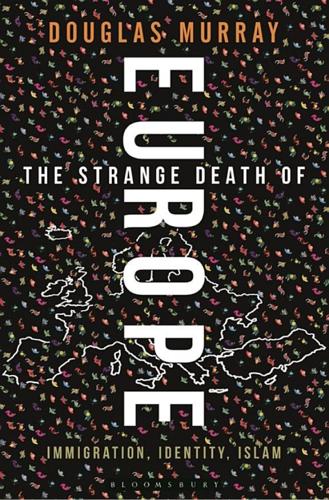
The Strange Death of Europe: Immigration, Identity, Islam
by
Douglas Murray
Published 3 May 2017
She did so in the middle of a significant public debate already going on in her country. Weeks earlier Thilo Sarrazin, a former Senator and member of the executive board of the Bundesbank, had published a book titled Deutschland schafft sich ab (Germany Is Abolishing Itself), which was like an explosion in such a consensus-driven society. In his book Sarrazin had explained how low birth rates among Germans and an overly high level of immigration – Muslim immigration in particular – was fundamentally transforming the nature of German society. What perhaps caused most controversy was his argument that a higher birth rate among less well-educated people and a lower birth rate among more highly educated people was putting at risk Germany’s post-war success and prosperity.
…
While large-casualty atrocities like this caught the headlines and galvanised the European press for a couple of news cycles, all the time the facts on the ground were changing the continent as a whole. The German authorities recorded an additional 680,000 arrivals into their country in 2016 alone. Such continuing mass immigration, high birth rates among immigrants and low birth rates among native Europeans all ensured that the changes underway would only accelerate in the years ahead. The German people had demonstrated at the polls that politically speaking even Merkel was mortal. But she had helped to alter a continent and change an entire society, with consequences that would play out for generations to come. 16 The feeling that the story has run out It is as well to admit when your enemies are onto something.
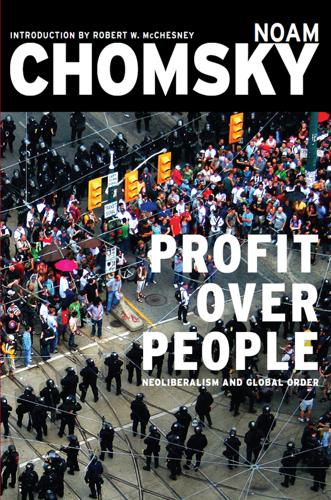
Profit Over People: Neoliberalism and Global Order
by
Noam Chomsky
Published 6 Sep 2011
But the victims have to live with the fact that the CDA has “resulted in a serious reduction in the trade of legitimate medical supplies and food donations, to the detriment of the Cuban people” (Cameron). A recently released study of the American Association for World Health (AAWH) concludes that the embargo has caused serious nutritional deficits, deterioration in the supply of safe drinking water, and sharp decline in availability of medicines and medical information, leading to a low birth rate, epidemics of neurological and other diseases with tens of thousands of victims, and other severe health consequences. “Health and nutrition standards have been devastated by the recent tightening of the 37-year-old U.S. embargo, which includes food imports,” Victoria Brittain writes in the British press, reporting the year-long AAWH study by US specialists, which found “hospitalised children lying in agony as essential drugs are denied them,” and doctors compelled “to work with medical equipment at less than half efficiency because they have no spare parts.”

Elon Musk: Tesla, SpaceX, and the Quest for a Fantastic Future
by
Ashlee Vance
Published 18 May 2015
But if each successive generation of smart people has fewer kids, that’s probably bad, too. I mean, Europe, Japan, Russia, China are all headed for demographic implosion. And the fact of the matter is that basically the wealthier—basically wealth, education, and being secular are all indicative of low birth rate. They all correlate with low birth rate. I’m not saying like only smart people should have kids. I’m just saying that smart people should have kids as well. They should at least maintain—at least be a replacement rate. And the fact of the matter is that I notice that a lot of really smart women have zero or one kid.
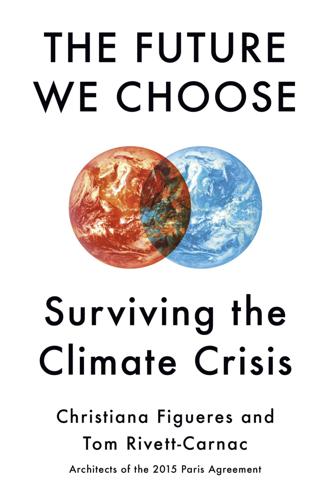
The Future We Choose: Surviving the Climate Crisis
by
Christiana Figueres
and
Tom Rivett-Carnac
Published 25 Feb 2020
Julio Díaz, public health and environment expert at the National School of Public Health in Madrid, which is part of the Carlos III Health Institute, reports that individuals with kidney problems and neurodegenerative diseases such as Parkinson’s visit the doctor more frequently in hot weather. Excessive heat also increases the risk of premature births and low birth rates. Cited in Manuel Planelles, “More Than a Feeling: Summers in Spain Really Are Getting Longer and Hotter,” El País, April 3, 2019, https://elpais.com/elpais/2019/04/03/inenglish/1554279672_888064.html. 3. E. O. Wilson Biodiversity Foundation, “Half-Earth: Our Planet’s Fight for Life,” https://eowilsonfoundation.org/half-earth-our-planet-s-fight-for-life/; Emily E.

The Coming Anarchy: Shattering the Dreams of the Post Cold War
by
Robert D. Kaplan
Published 1 Jan 1994
The demise of the Soviet Union was no reason for us to pressure Rwanda and other countries to form political par ties—though that is what our post-Cold War foreign policy has been largely about, even in parts of the world that the Cold War barely touched. The Eastern European countries liberated in 1989 already had, in varying degrees, the historical and social preconditions for both democracy and advanced industrial life: bourgeois traditions, exposure to the Western Enlightenment, high literacy rates, low birth rates, and so on. The post-Cold War effort to bring democracy to those countries has been rea sonable. What is less reasonable is to put a gun to the head of the peoples of the developing world and say, in effect, "Behave as if you had experienced the Western Enlightenment to the de gree that Poland and the Czech Republic did.

The Rational Optimist: How Prosperity Evolves
by
Matt Ridley
Published 17 May 2010
The transition seems to kick in as countries grow richer, but there is no exact level of income at which it happens, and the poor and the rich within any country start reducing their birth rate about the same time. Once again, there are exceptions: Yemen has almost twice the birth rate and almost twice the income per head of Laos. Is it female emancipation? Certainly, the correlation between widespread female education and low birth rate is pretty tight, and the high fecundity of many Arab countries must in part reflect women’s relative lack of control over their own lives. Probably by far the best policy for reducing population is to encourage female education. It is evolutionarily plausible that in the human species, females want to have relatively few children and give them high-quality upbringing, whereas males like to have lots of children and care less about the quality of their upbringing.
…
As Ron Bailey puts it, in complete contradiction of Garrett Hardin: ‘There is no need to impose coercive population control measures; economic freedom actually generates a benign invisible hand of population control.’ Most economists are now more worried about the effects of imploding populations than they are about exploding ones. Countries with very low birth rates have rapidly ageing workforces. This means more and more old people eating the savings and taxes of fewer and fewer people of working age. They are right to be concerned, though they would be wrong to be apocalyptic, after all, today’s 40-year-olds will surely be happier to continue operating computers in their seventies than today’s 70-year-olds are to continue operating machine tools.
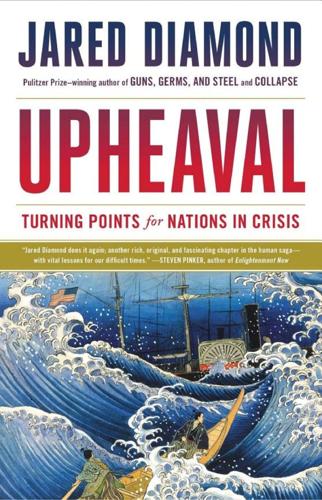
Upheaval: Turning Points for Nations in Crisis
by
Jared Diamond
Published 6 May 2019
But Japan has nearly the world’s lowest birth rate: 7 births per year per 1,000 people, compared to 13 in the U.S., 19 averaged over the whole world, and more than 40 in some African countries. Furthermore, that already low birth rate in Japan is still declining. If in recent years one had linearly extrapolated the decline from year to year, one would have predicted that Japan’s birth rate would hit zero in the year 2017, at which point no more Japanese babies would be born! Obviously, things didn’t get that bad, but it’s true that Japan’s already very low birth rate is still declining. An alternative way of expressing births is by what’s called the total fertility rate: i.e., the total number of babies born to an average woman over her lifetime.

In Pursuit of the Perfect Portfolio: The Stories, Voices, and Key Insights of the Pioneers Who Shaped the Way We Invest
by
Andrew W. Lo
and
Stephen R. Foerster
Published 16 Aug 2021
He argued that there were indeed “forces that might renew the American Dream and restore economic growth.”35 On the one hand, there are unprecedented numbers of individuals in the developed world entering retirement age, giving rise to the questions of who will produce goods and services for them to consume and who will buy the assets they will sell in order to finance their retirement. If countries rely only on their own populations, the retirement ages in a given country with low birth rates must increase in order to have a sustainable economic model for retirement. On the other hand, the strong growth in emerging economies such as China and India, may be able to produce enough goods and generate enough savings to purchase the assets of retirees in developed countries with low birth rates. Siegel concluded that such growth could still enable future stock returns to stay near their historical levels. One of Siegel’s most important insights focused on the riskiness of investing in stocks.

Grand Transitions: How the Modern World Was Made
by
Vaclav Smil
Published 2 Mar 2021
Susan Hanley questioned its validity for Japan as she concluded that there was no sharp discontinuity between the population dynamics during the Tokugawa period (1604–1861) and that of their descendants not just during the Meiji period (1868–1912) but even during the 1920s, because the traditional populations had low birth rates and relatively high life expectancies (Hanley 1974). But Carl Mosk refuted that conclusion by pointing out that we do not have trustworthy information either for Tokugawa or Meiji population dynamics: evidence comes from a small number of villages, there are large spatial and temporal variations, infants’ deaths were underreported, and the low birth rate can be explained by low fecundity due to poor diet creating temporary sterility and causing long intervals between births (Mosk 1977).

The Treason of the Intellectuals
by
Julien Benda
Published 14 Oct 2006
It is moreover certain that a group which desires to be strong has no use for the man who claims to think for himself.79 The second is the teaching whereby they declare to men that the fact that a group is numerous constitutes a right. This is the morality which the over-populated nations hear from many of their thinkers, while the other nations hear from many of theirs that if their low birth-rate continues they will become the objects of a “legitimate” extermination. The rights of numerousness admitted by men who claim to belong to the life of the mind —that is what modern humanity sees. But it is certain that if a nation is to be strong, it must be numerous. This cult of the strong State and the moral methods which ensure it have been preached to mankind by the “clerks” far beyond the domain of politics, and on a wholly general plane.

Numbers Don't Lie: 71 Stories to Help Us Understand the Modern World
by
Vaclav Smil
Published 4 May 2021
After leaving out minuscule jurisdictions—from Andorra and Anguilla to Monaco and San Marino—this group with infant mortalities lower than 5 per 1,000 includes about 35 countries ranging from Japan (at 2) to Serbia (at just under 5), and its frontrunners show why the measure cannot be used for simplistic ranking without reference to wider demographic conditions. Countries with the lowest infant mortalities are mostly small (with populations less than 10 million and usually less than 5 million), they include the world’s most homogeneous societies (Japan and South Korea in Asia; Iceland, Finland, and Norway in Europe), and most of them have very low birth rates. Obviously, it is more challenging to reach and maintain very low infant mortalities in larger, heterogeneous societies with high rates of immigration from less affluent countries, and in countries with higher birth rates. As a result, it would be difficult to replicate the Icelandic rate (3) in Canada (infant mortality at 5), a country whose population is more than 100 times larger and that welcomes annually about as many newcomers (from scores of countries, and mostly from low-income societies in Asia) as there are total people living in Iceland.

Order Without Design: How Markets Shape Cities
by
Alain Bertaud
Published 9 Nov 2018
While no successful immigration can occur without a minimum of generosity and benevolence, the economic benefits of immigrations are very large and should in themselves be the prime motivation of immigration policy. The economic case for immigration is often confused with the human rights case for refugees, which is of course a quite different argument. While immigration is indispensable to fuel the economic growth of cities located in countries with low birth rates and with an already high urbanization rate, the pace of immigration should be controlled. To become fully economically effective, new immigrants must have time to adapt to the social norms and language of the host country, and this adaption takes resources that must be allocated in a national budget or at least by motivated NGOs.
…
The planned infrastructure will provide access to the sea for central Asia countries, with their vast natural resources. The increased exchanges following the newly created maritime routes will further stimulate the growth of cities in the region and the migration of population toward large cities. Some large cities of Asia, in particular in China and India, may already be affected by low birth rates linked to newly found affluence. However, these cities are in countries that still have a large reserve of surplus labor in rural areas. Their continuous growth for the medium term is therefore ensured. The possibility of extensive communication and cultural exchange between Asian countries with different and deep cultural traditions will certainly greatly stimulate the creativity and innovation of cities of the region.

Broken Markets: A User's Guide to the Post-Finance Economy
by
Kevin Mellyn
Published 18 Jun 2012
The country could do better with more 135 136 Chapter 6 | The Consumer in the World After Finance reform, but there is no sense of crisis. Instead, Japan seems to be finding its way on a long and steady path toward being the first “post-growth” society. This is partially driven by demography, an aging population, and low birth rate, which means there will be many fewer Japanese people in future. This of course means less economic growth, but also less need for it. Given the choice between maintaining their cultural homogeneity and growth through immigration, they will choose the former. In America, such a choice would be greeted with moral outrage; in Japan, it doesn’t even seem a choice.
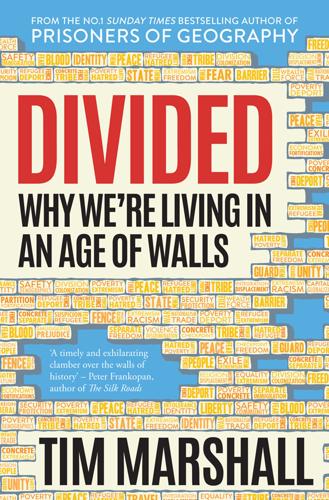
Divided: Why We're Living in an Age of Walls
by
Tim Marshall
Published 8 Mar 2018
Nevertheless, huge numbers of Europeans do have a positive view of immigration and are happy to welcome newcomers to their countries. Many feel the West has a moral obligation to help those fleeing violence and persecution, while others support the argument, put forward by many politicians, economists and business leaders, that European countries actually need immigrants: due to ageing populations and low birth rates, some countries – Germany, for example, where the median age is 46.8 – face a population decline and so need immigrants to ensure a healthy economy in the future. But although governments repeatedly try to explain this, people tend to base their feelings on the current situation, not on some vague problem in the future, and the number of those who support immigration is shrinking.
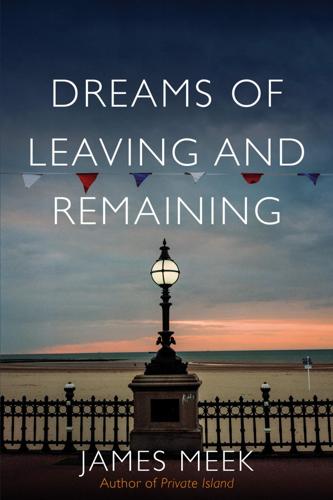
Dreams of Leaving and Remaining
by
James Meek
Published 5 Mar 2019
Law and Justice restored the old retirement age and introduced a hefty non-means tested child benefit allowance of 500 złoty a month (€125) for a couple or single parent with a second child, to be funded at least partly by new taxes on foreign investors: not those who built factories – not yet – but those who’ve come to dominate shopping and retail banking. It also increased the minimum wage. Civic Platform doesn’t ask what makes these policies popular: inequality caused by an unfair tax system? Resentment towards foreign supermarkets for the crushing of small Polish shops? A sense that low birth rates threaten Poland’s existence? Instead it characterises them as reckless handouts that will destroy the economy. One of the nails in Civic Platform’s coffin was a series of transcripts of secret recordings of conversations between government officials published in 2014 in the magazine Wprost. Civic Platform, the champion of press freedom, sent in the security services in an unsuccessful attempt to seize the recordings.
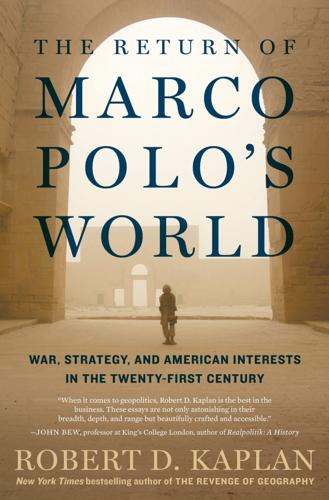
The Return of Marco Polo's World: War, Strategy, and American Interests in the Twenty-First Century
by
Robert D. Kaplan
Published 6 Mar 2018
His attempts to compare himself with President Harry Truman—a president whose decisions were also hated at the time he made them—have the air of desperation rather than of historical thinking. I am aware that the American death toll in Iraq is many times lower than that in Vietnam, and that aversion to casualties has become a feature of low-birth-rate, postindustrial democratic societies. But I am also aware that when I and others supported a war to liberate Iraq, we never fully or accurately contemplated the price that would have to be paid. Of course, it can be argued that the high human cost of the war was not a result of the invasion at all, but of the negligence that characterized the subsequent military occupation.

Propaganda and the Public Mind
by
Noam Chomsky
and
David Barsamian
Published 31 Mar 2015
Very recently there was one or maybe more cases where women were allowed in. But that’s a big struggle. Now the Orthodox are quite huge. They have a very high birth rate. They and the Palestinians have a much higher birth rate than secular Jews, who are kind of like Europeans, who tend to have low birth rates. The demographic projections indicate that in the not-too-far-distant future it may be substantially a population of Palestinians and Orthodox Jews, fundamentalist Orthodox Jews, many of whom don’t work in the civil society. They’re under the control of fanatical rabbis. They live their lives studying Talmud.

The New Class Conflict
by
Joel Kotkin
Published 31 Aug 2014
The huge public employee pensions now driving many states and cities toward the netherworld of bankruptcy represent an extreme case of intergenerational transfer from the young to a retired population. Providing guaranteed generous benefits to older public workers while handing the financial upper echelon an opportunity to invest and manage their pensions constitutes what Walter Russell Mead has aptly called a “Wall Street boondoggle.”15 The implications of low birth rates and a largely disengaged younger workforce can be seen in other advanced countries. In Japan, the red ink for the next generation comes in at over $95,000 a person. One nasty solution to pay for this growing debt is to increase taxes on both workers and consumers. Both Germany and Japan, which has considered steps to double its VAT rate, have been exploring new taxes to maintain the government, much of it due to the burdens of paying off boomer pensions.16 The Limits of Education For generations, education has provided the key to upward mobility, but many coming of age today face both a rising burden for education and diminishing returns.
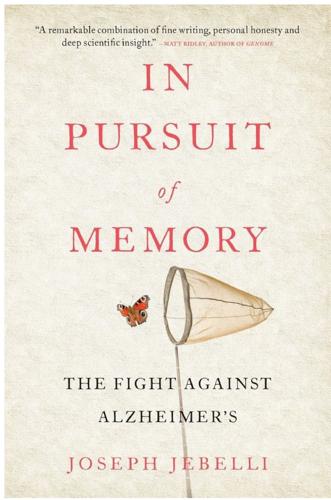
In Pursuit of Memory: The Fight Against Alzheimer's
by
Joseph Jebelli
Published 30 Oct 2017
The East Asian island nation is now home to the fastest ageing population on the planet. Nearly a third of its citizens are above the age of sixty-five, and this is set to climb to 40 per cent by 2055.1 Combine that with the estimated drop in Japan’s population from 127 million to 90 million in the same timespan–due to notoriously low birth rates–and it’s not surprising that the country is on the brink of a dementia epidemic. The dire situation has led the Japanese minister of health to call for a million extra foreign nurses and carers by 2025, to thwart a population collapse. So, does it work? Kawashima certainly thinks so. ‘I believe that the brain is a brain, whether it’s in children or older people.’
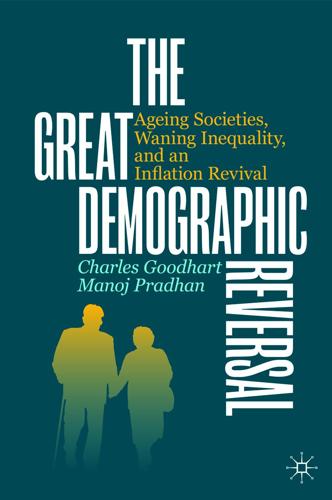
The Great Demographic Reversal: Ageing Societies, Waning Inequality, and an Inflation Revival
by
Charles Goodhart
and
Manoj Pradhan
Published 8 Aug 2020
While robots can play a limited role, see the Lex Column in the Financial Times, Monday, June 10 2019, p. 22, ‘Robots/ageing Japan: I, carebot’, the emphasis should be placed on the limitations of that role. 10In the Financial Times (Lex, Monday, June 10 2019, p. 22), it was stated that Japan has the most rapidly ageing population in the world. Low birth rates have continued for three decades. Almost a third of the population is over 65. To help look after them, Japan needs to increase the number of care workers almost sevenfold over the next decade from the current 1.5 m. Paid carers would constitute more than a 10th of the workforce. 11In the Financial Times report on ‘Foreign operators take on Chinese elderly care’, July 16 2019, p. 14, it was stated that About 90 per cent of Chinese seniors rely mainly on family support, 7 per cent on residential community-based care services and 3 per cent on nursing homes, according to the Qianzhan Industry Research Institute, a consultancy. 12The number of such child dependents per family has been falling, which reduces the time span of having dependent children by a few years.
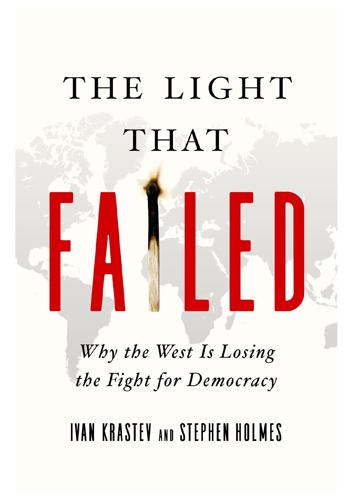
The Light That Failed: A Reckoning
by
Ivan Krastev
and
Stephen Holmes
Published 31 Oct 2019
Two million East Germans, or almost 14 per cent of the country’s pre-1989 inhabitants, went to West Germany in search of work and a better life. 3.4 million Romanians, a vast majority of them younger than forty, left the country only after the country joined the EU in 2007. The combination of an ageing population, low birth rates and an unending stream of emigration is arguably the principal source of demographic panic in Central and Eastern Europe. This fear of nation-killing depopulation is seldom openly voiced, perhaps because publicizing high rates of expatriation will encourage imitators. But it is nonetheless real and may well be expressed indirectly in the nonsensical claim that migrants from Africa and the Middle East pose a threat to the existence of the nations of the region.

The Making of a World City: London 1991 to 2021
by
Greg Clark
Published 31 Dec 2014
Finally, the new business cycle has brought into clarity the reality of demographic change that is profoundly shaping cities’ revenue capabilities and service delivery demands. As well as increased mobility, especially of younger knowledge workers and aspirational immigrants, cities are confronted with dramatically extended life expectancies often coupled with low birth rates. As a result, urban life is for the most part becoming more and more racially, socially and economically diverse. This produces greater heterogeneity in citizenry aspirations, and the need for world cities to provide distinctive services and representation to different population segments. Measuring world cities in 2015 Since the 1991 London: World City report, there has been a wide consensus of what constituted success for aspiring world cities: mobility and space to grow, quality of life and place, a highly-skilled labour force, transparency of business environment, concentrations of banking and insurance firms, and a wellmanaged city brand.
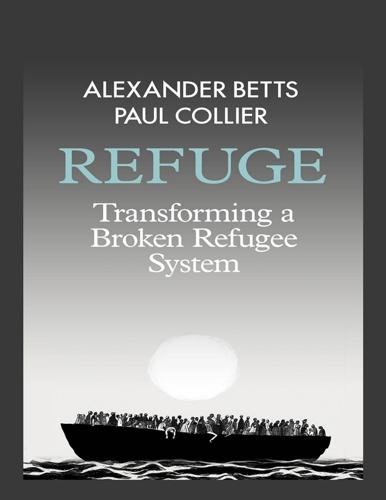
Refuge: Transforming a Broken Refugee System
by
Alexander Betts
and
Paul Collier
Published 29 Mar 2017
Perhaps, when the conflict ends, the engineer will return home; perhaps, indeed, he will return better equipped with skills and experience than had he remained in a camp. But perhaps he and his family will settle in Italy, and that would be a loss for post-conflict Syria. The skills of the teacher may be less suited to Italy: tuition is obviously in Italian, and the society has an exceptionally low birth rate. As we discussed above, the teacher may not have been able to teach while in the camp. But other Syrian teachers have taken the opportunity to flock to Europe, abandoning Syrian refugee children in the process. For example, in one refugee camp for Syrian Kurds in Iraq, Syrian teachers have left for Germany and elsewhere, leaving teachers from Europe to provide education in the camp.9 The exodus of the educated has been systematic.
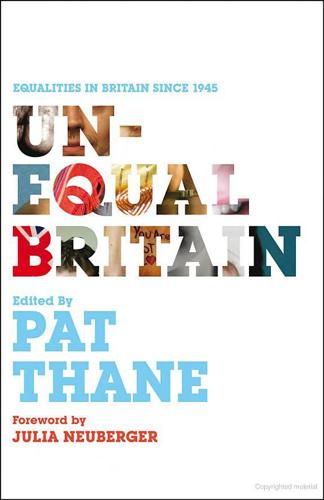
Unequal Britain: Equalities in Britain Since 1945
by
Pat Thane
Published 18 Apr 2010
They came to be seen as very distinct social groups, whereas previously the boundary had been more fluid, because working class people in particular worked for as long as they were able, from financial necessity.18 In the 1950s, concern about the ageing population and shrinking workforce declined, as it became apparent that the birth rate had continued to rise since the war. Growing immigration (see Chapter 2) and the increasing participation of women in the labour market (see Chapter 5) expanded the workforce. Government efforts to diminish ageism in employment vanished. The confident projections of the 1930s and 1940s of a future of continuously low birth rates and an ageing population appeared to be wrong, at least in the short term. In the 1950s and early 1960s, research revealed continuing high levels of poverty among older people, especially for women, who were the majority of over 65s.19 Appalling conditions were also exposed in some residential homes.20 In popular discourse, ‘old age pensioner’ was equated with retirement and poverty, although the term ‘elderly’ came increasingly into use to indicate greater respect than ‘old’.

The Emperor Far Away: Travels at the Edge of China
by
David Eimer
Published 13 Aug 2014
In the regions close to Dongbei, it may have been as high as 20 per cent of the population. Faced with an ever-increasing influx of North Koreans, Beijing grew uneasy and began hunting down the refugees and returning them to the DPRK. They were seen as a threat to the stability of Yanbian, their presence redressing the decline in the number of Chinese Koreans caused by their low birth rate and emigration to other parts of Dongbei. The CCP feared also the impact of the migrants on Yanbian’s already precarious economy, as they were prepared to work for lower wages than the locals. Beijing’s nightmare scenario in Yanbian is the sudden and total collapse of the DPRK. Inevitably, that would lead to people coming across the border in far greater numbers than ever before.

Forward: Notes on the Future of Our Democracy
by
Andrew Yang
Published 15 Nov 2021
Everything changed after “Andrew Yang,” The Joe Rogan Experience, episode 1245, YouTube, uploaded Feb. 12, 2019, www.youtube.com/watch?v=cTsEzmFamZ8. One of the data points Andrew Yang (@AndrewYang), “Deaths now outnumber births among white people in more than half the states in the country. Much of this is low birth rates and white men dying from substance abuse and suicide. Our life expectancy has declined for 2 years. We need to do much more,” Twitter, Feb. 15, 2019, 11:13 a.m., https://twitter.com/AndrewYang/status/1096442292527874048. MSNBC and CNN regularly omitted me Kimberly Yam, “MSNBC Misidentifies Andrew Yang as ‘John Yang,’ ” HuffPost, Sept. 10, 2019.
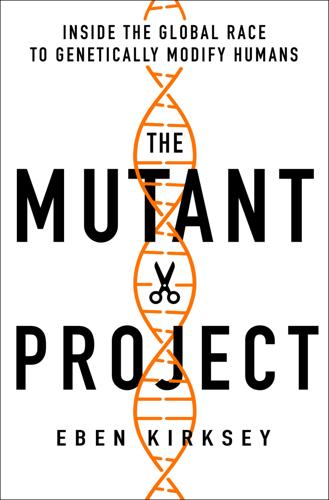
The Mutant Project: Inside the Global Race to Genetically Modify Humans
by
Eben Kirksey
Published 10 Nov 2020
With someone who is over forty-two, there is such a low chance of pregnancy that it is unfair to offer to freeze eggs and offer false hope.” IVF clinics have a history of making money from couples who have little chance of actually getting pregnant. “What I find so corrupt is that you are talking about the most vulnerable patients there are,” she argued, “that is, somebody who wants a baby.” Since IVF has very low birth rates—ranging from 29 percent for women under thirty-five to less than 2 percent for women over forty-four—many clinics have tried to inflate their success by playing with numbers. Some doctors were reporting “chemical pregnancies,” rather than clinical pregnancies, where a fetal heartbeat is heard.
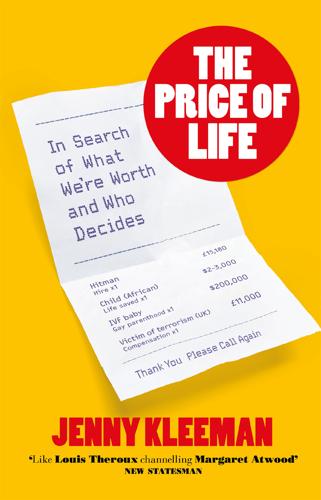
The Price of Life: In Search of What We're Worth and Who Decides
by
Jenny Kleeman
Published 13 Mar 2024
‘It’s exactly the same,’ Nader replies, delighted to be challenged. He picks up a black marker and writes ‘2.1’ on the sketchpad in front of him. In order for a country to sustain itself – ‘and assuming that immigrants like me do not exist’ – households need to be producing 2.1 children, he says, but the average in England is currently 1.5. With low birth rates and a resistance to immigration, there’s nothing to fill the deficit; there aren’t enough taxpayers, which means we are sitting on a pension time bomb. The countries with the biggest pension holes are increasingly funding IVF at the national level. ‘In Denmark, Israel, Japan, 10 per cent of all babies born are through IVF.

Rise of the Robots: Technology and the Threat of a Jobless Future
by
Martin Ford
Published 4 May 2015
Elder-Care Robots The populations of all advanced countries, as well as many developing nations, are aging rapidly. The United States is projected to have over 70 million senior citizens, making up about 19 percent of the population, by 2030. That’s up from just 12.4 percent in 2000.18 In Japan, longevity combined with a low birth rate make the problem even more extreme; by 2025 fully a third of the population will be over sixty-five. The Japanese also have a nearly xenophobic aversion to the increased immigration that might help mitigate the problem. As a result, Japan already has at least 700,000 fewer elder-care workers than it needs—and the shortage is expected to become far more severe in the coming decades.19 This surging global demographic imbalance is creating one of the greatest opportunities in the field of robotics: the development of affordable machines that can assist in caring for the elderly.

Border: A Journey to the Edge of Europe
by
Kapka Kassabova
Published 4 Sep 2017
Although many Turks had already left Bulgaria in various waves of voluntary or involuntary resettlement in the wake of the Ottomans’ retreat from the Balkans, by the time the Iron Curtain was in place ethnic Turks still accounted for 8 per cent of the population. By the 1980s, because of the depressed Bulgarians’ low birth rate and the slightly higher birth rate of ethnic Turks (who were less urbanised), the 8 per cent was more like 10. What if, in another twenty years, ‘they’ outnumbered ‘us’, the State argued? A solution presented itself to the problem the Party politburo had fabricated: rename Turks, Christianise them, and ban mosques (although all religion was, strictly speaking, already banned).

Pure Invention: How Japan's Pop Culture Conquered the World
by
Matt Alt
Published 14 Apr 2020
(The latter’s theme song is an animated homage to the old Hideaki Anno–directed fan-festival film short—set, naturally, to the very same soundtrack of Electric Light Orchestra’s “Twilight.”) Train Man’s arrival coincides with increasingly dire reports about the Japanese economy and the nation’s perilously low birth rate, utterly unimproved from the decade before, which has triggered society-wide discussions about employment, gender roles, masculinity—even the very survival of Japan itself. Evangelion rehabilitated the image of the otaku from outcast losers, making them unlikely trendsetters. The popularity of the Train Man franchise—one lonely man, now a national franchise!

Exceptional People: How Migration Shaped Our World and Will Define Our Future
by
Ian Goldin
,
Geoffrey Cameron
and
Meera Balarajan
Published 20 Dec 2010
While migrants had previously come from the more developed countries in Europe to the undeveloped regions of the New World and colonies, an increasing proportion of those leaving by 1915 came from the less developed areas in southern and eastern Europe and settled elsewhere in Europe or in Canada, Australia, Argentina, Brazil, and New Zealand.53 In Europe, France faced labor pressures following World War I because of low birth rates and the high number of casualties suffered during the war—1.4 million dead and another 1.5 million permanently handicapped.54 In response to labor demands, farm and mining interests set up a private recruitment agency, Société Générale d'Immigration (SGI), to bring in about 560,000 migrants. The migrants brought into France through SGI were about a quarter of roughly two million workers who entered France between 1920 and 1930.

How the World Works
by
Noam Chomsky
,
Arthur Naiman
and
David Barsamian
Published 13 Sep 2011
See also Gulf crisis Gulf War invasion of Kuwait Kurds in prewar US support for UN sanctions against US intervention in, UN and Ireland Irish potato famine Islamic fundamentalism IsraelSee also Middle East Allon plan American Jews and Arab moderates as threat to attitudes toward Hamas Baker Plan Beirut bombing British in Egypt invaded by Gaza Gush Katif Hebron intifada Iran arms flow from Jerusalem Labor government Lebanon invaded by legality of US aid to legal system in territories Likud government long-term future of nuclear weapons of Occupied Territories Oslo II agreement Palestinian Authority Palestinians deported by Palestinians massacred by Palestinian “state”‘ PLO and Sabra and Shatila massacres (Lebanon) US aid to US bias toward West Bank settlements Zionism Italy CIA in fascist restoration after WWII Lombard League in low birth rate in 1948 elections WWII resistance, Allies’ actions against Jackson, Andrew Japan authoritarian culture in European imperialism resisted by foreign debt and import restrictions industrialization in industrial policy in public control possible in recovery under US control semiconductors and US auto executives’ visit to US policy toward Vietnam investments of as world power yen-based economic block jargon Jay, John Jefferson, Thomas as anticapitalist on aristocrats vs. democrats “manufacturing aristocracy” feared by public broadcasting and racist goal for country warning about corporations wealth vs. democracy and Jerusalem.
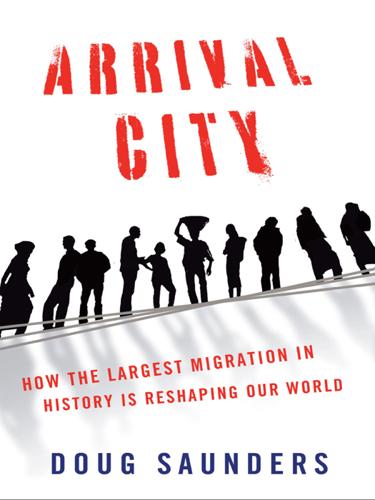
Arrival City
by
Doug Saunders
Published 22 Mar 2011
It was those women, least equipped for the task of urban arrival, who ended up bringing children, themselves without citizenship, into the world. In the first years of the twenty-first century, the German government began to awaken to the problem in its midst. It became apparent that Turks, and other immigrants, would have to be permanent: With its low birth rates, the German population would fall from 82 million to less than 60 million by 2050, leading to the collapse of the country’s pension and social-security system and a dramatic decline in living standards for everyone. The government realized that the “guest” Turks, many of them with German-born grandchildren by now, were both a problem and a solution.
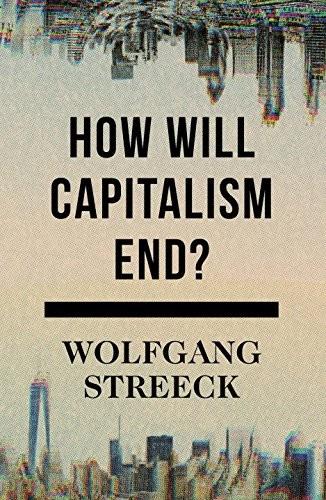
How Will Capitalism End?
by
Wolfgang Streeck
Published 8 Nov 2016
Sarrazin was an SPD politician, from 2002 to 2009 Finance Minister of the Land of Berlin, after which he became a member of the Executive Board of the Bundesbank, until he was fired as an international liability to the Federal Republic of Germany. Sarrazin is known as a prominent so-called ‘Islamkritiker’. The book claims, in short, that immigration from Islamic countries together with low birth rates among educated middle-class women of German descent weakens the country’s genetic base, especially by lowering the average IQ, and because of this will in the long run damage the competitiveness of the German economy. While Sarrazin is an academically trained economist, the book draws extensively on psychological and demographic research and frequently ventures onto sociological terrain, for example when discussing the relationship between intelligence and religion on the one hand and economic and social achievement on the other.

The Theory of the Leisure Class
by
Thorstein Veblen
Published 10 Oct 2007
So far as concerns that portion of their consumption that may without blame be carried on in secret, they withdraw from all contact with their neighbours, Hence the exclusiveness of people, as regards their domestic life, in most of the industrially developed communities; and hence, by remoter derivation, the habit of privacy and reserve that is so large a feature in the code of proprieties of the better classes in all communities. The low birth rate of the classes upon whom the requirements of reputable expenditure fall with great urgency is likewise traceable to the exigencies of a standard of living based on conspicuous waste. The conspicuous consumption, and the consequent increased expense, required in the reputable maintenance of a child is very considerable and acts as a powerful deterrent.

The Great Firewall of China
by
James Griffiths;
Published 15 Jan 2018
He left China partly on the insistence of his father, who saw in his son’s talent and rebelliousness a great danger. “It was a constant struggle as I was growing up. There were a lot of fights,” he said. His father had once considered moving to Australia, and he encouraged Badiucao to look into it. With the ruthless pragmatism of true Shanghaiers, they chose Adelaide, where, because of South Australia’s low birth rate, a young immigrant like Badiucao was worth more in the country’s points-based visa system. From his new sanctuary, Badiucao began posting to Weibo more and more. But as his work grew in popularity, with more shares and comments for every artwork, the more likely it was to be taken down by the site’s censors.
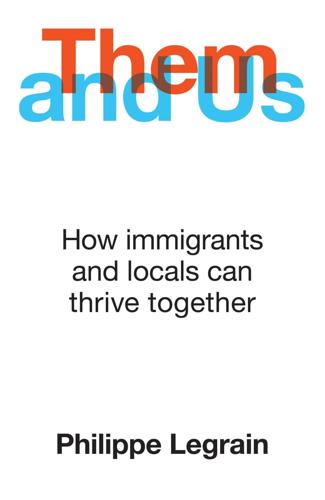
Them and Us: How Immigrants and Locals Can Thrive Together
by
Philippe Legrain
Published 14 Oct 2020
But the discrepancies don’t alter the big picture. Globally, immigrants are a tiny minority. That is only part of the picture, though. While people of all kinds move in all directions for all sorts of reasons, the global pattern of migration is highly uneven. In large part, people from poorer countries move to rich countries that have low birth rates, where they account for a rising share of the population and an even greater proportion of the population increase.3 Alongside this economic dimension is an ethnic one: the newcomers tend to be culturally different, and are often racially different too. One crude way of putting it is this. In the colonial era, the West put its stamp on the rest of the world.
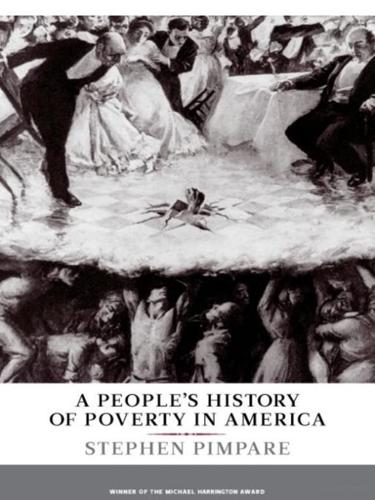
A People's History of Poverty in America
by
Stephen Pimpare
Published 11 Nov 2008
Looking just at the United States, Heather Boushey and her colleagues broaden the traditional poverty measure by evaluating instances of critical hardships (missing meals, eviction, disconnected utilities, or not receiving essential medical care) and serious hardships (lack of child care, worries about access to food and stable shelter, missing utility payments, disconnected phone).64 The Annie E. Casey Foundation has tracked children’s well-being since 1990 for all fifty American states along seventy-five measures, and has created an index of ten key indicators: infant mortality, low birth rate, child death rate, teen death rate, teen birth rate, high school dropout rate, parents’ employment, number in two-parent households, number not in school, number employed or in the military, and the child poverty rate.65 Similar national-level efforts have been undertaken by the Federal Interagency Forum on Child and Family Statistics (since 1997) and the U.S.

World Cities and Nation States
by
Greg Clark
and
Tim Moonen
Published 19 Dec 2016
If this approach is pursued, the State will need to act judiciously to avoid mistakes that famously Moscow 169 took place in the 1995 loan‐for‐shares scandal (Buckley, 2016; Ministry of Finance of the Russian Federation, 2016a, 2016b). The national system of cities: Moscow and Russia Russia reached a high threshold of urbanisation at the end of the Soviet era, at 73%, and this figure has stayed roughly the same for the following 25 years. Although new urban settlements have been established, a low birth rate has also prevented the share of urban residents from rising much further. The most visible development in the system of cities in the post‐Communist era is the way Moscow has come to play an even more dominant role in the Russian system, at a cost of considerable financial distortions and disparities in less‐developed regions.

Wasteland: The Dirty Truth About What We Throw Away, Where It Goes, and Why It Matters
by
Oliver Franklin-Wallis
Published 21 Jun 2023
A recent study found that US landfills typically contain hundreds of toxic chemicals, ranging from agricultural pesticides to industrial pollutants, PCBs, Bisphenol-A, per- and polyfluoroalkyl substances (PFASs) – many of which are potent human toxicants, causing cancer, endocrinal disruption (that is, they mess with your hormones) and neurological damage.12 Pharmaceuticals, including antibiotics, find their way in; so too do heavy metals like lead, mercury and zinc, which arrive inside toys, household electronics, lightbulbs, televisions and old-fashioned lead paint. Of the 1,333 sites currently on the US’s Superfund National Priority List – the index of the most toxic places in America – 159 are former landfills.13 No wonder, then, that working on or living near landfill sites is associated with a greater risk of asthma, respiratory disease, leukaemia, low birth rates and several types of cancer.14 To keep that noxious soup inside, each cell of a modern sanitary landfill is carefully engineered. ‘I like to use the analogy of a pie,’ Vic says. ‘You have your bowl, and you rely on your bowl to make sure that all the inner of the pie doesn’t leak out.’ The hole is first lined with bentonite clay, which is then covered with a non-permeable plastic liner, welded shut at the seams.
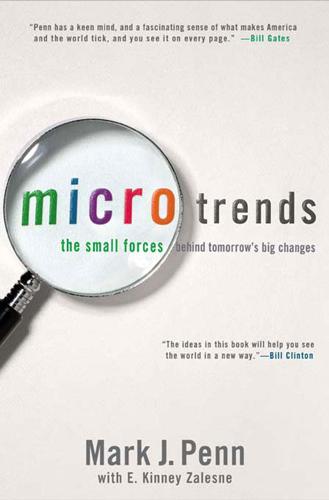
Microtrends: The Small Forces Behind Tomorrow's Big Changes
by
Mark Penn
and
E. Kinney Zalesne
Published 5 Sep 2007
They have warned that in the next fifty years, the ratio of beneficiaries to workers in Europe will be so lopsided that some countries may crumble under the challenge. They have even said that increased rates of Asian or African immigration—which would itself cause social stress—wouldn’t compensate for falling European birth rates. Other challenges of their low birth rate include the likelihood that Europe’s market share will shrink; its military power will decrease as it dedicates an even bigger portion of its resources to supporting its elderly; and its proportional influence in the U.S. will decline, especially as America forges greater ties with the homelands of its new immigrants—Latin America, and South and East Asia.

The Red Queen: Sex and the Evolution of Human Nature
by
Matt Ridley
Published 14 Aug 1993
He believes that human beings have always taken into account the need to give a child a ‘good start in life’. They have never been prepared to sacrifice quality of children for quantity. Thus, when an expensive education became a prerequisite of success and prosperity around the time of the demographic transition to low birth rates, people were able to readjust and lower the numbers of children they had in order to be able to afford to send them to school. Exactly this reason is given today by Thai people for why they are having fewer children than their parents.61 There has been no genetic change since we were hunter-gatherers, but deep in the mind of modern man is a simple male hunter-gatherer rule: strive to acquire power and use it to lure women who will bear heirs; strive to acquire wealth and use it to buy affairs with other men’s wives who will bear bastards.
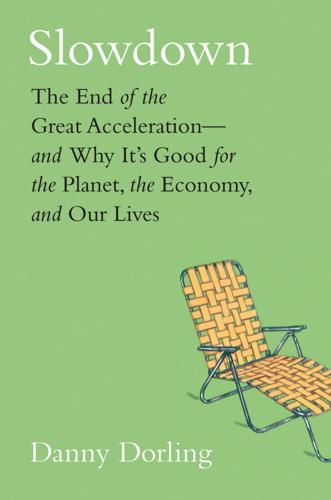
Slowdown: The End of the Great Acceleration―and Why It’s Good for the Planet, the Economy, and Our Lives
by
Danny Dorling
and
Kirsten McClure
Published 18 May 2020
Their projection would mean between 2 billion and 3 billion fewer humans by 2100 than the UN estimate.3 It has been obvious for some time to a small group of demographers that the human population slowdown began many decades ago, but just how rapid that slowdown is has been apparent only more recently. This is true when people are counted across the globe as a whole, but the slowdown began even earlier in certain countries and, especially when it comes to very low birth rates, within a few cities in those countries. The global point of greatest change, the international pivot point, came around the year 1968. The evidence that slowdown is really upon us with a vengeance is now so strong that Bricker and Ibbitson were able to quote a recent Deutsche Bank report by Sanjeev Sanyal that suggests the peak in human numbers on Earth will be reached at just 8.7 billion in 2055, and decline to 8 billion by 2100.

How to Invent Everything: A Survival Guide for the Stranded Time Traveler
by
Ryan North
Published 17 Sep 2018
De Morgan, Augustus. 1847 CE. Formal Logic, or, The Calculus of Inference, Necessary and Probable. Taylor and Walton. Derry, T. K., and Trevor I. Williams. 1993 CE. A Short History of Technology, from the Earliest Times to A.D. 1900. Oxford University Press. Devine, A. M. 1985 CE. “The Low Birth-Rate in Ancient Rome: A Possible Contributing Factor.” Rheinisches Museum für Philologie 313–17. Diamond, Jared. 1999 CE. Guns, Germs, and Steel: The Fates of Human Societies. W. W. Norton. Dietitians of Canada / Les diététistes du Canada. 2013 CE. “Factsheet: Functions and Food Sources of Common Vitamins.”

Masters of Management: How the Business Gurus and Their Ideas Have Changed the World—for Better and for Worse
by
Adrian Wooldridge
Published 29 Nov 2011
Free-marketers point out that the best way for business to help the poor is not to sign up to grand-sounding declarations but rather to do what comes naturally—and treat poor people as customers. The late C. K. Prahalad famously argued that people at the “bottom of the pyramid” represent a vast underserved market. The markets in the rich world are bound to shrink due to low birth rates and slow economic growth. The developing world, on the other hand, is producing a benign combination of high birth rates and rapid economic growth. In the free-marketers’ view, companies should devote their energies to dreaming up new products that are suited to the developing world and new ways of getting those products to poorer consumers, rather than to preening themselves over how responsible they are.

Open: The Story of Human Progress
by
Johan Norberg
Published 14 Sep 2020
Change has to come from within these countries, for example as economic realities spark a new discussion about the benefits of immigration. Interestingly, some Eastern European countries that are strongly anti-immigration in rhetoric also have the most need for immigrants because of large-scale emigration and low birth rates. Without more immigrants they suffer labour shortages, and an economic model based on cheap labour-intensive production is at risk. This is why Poland has silently opened its doors to workers from the East. In a way, you can even say this nominally anti-immigrant country is the most immigrant-friendly in Europe, since it hands out more first residence permits than any other EU country, especially to Ukrainians.

Doppelganger: A Trip Into the Mirror World
by
Naomi Klein
Published 11 Sep 2023
It seems that to many people, a truthful telling of history feels like treachery—and must be stamped out. But if those truths are stuffed back away, they will keep haunting us and keep reemerging in the Mirror World in distorted, twisted form. On May 14, 2022, an eighteen-year-old white supremacist obsessed with the Great Replacement theory and low birth rates among whites drove to a Tops supermarket in Buffalo, New York, with the aim of killing as many Black people as possible. He murdered ten people with a legally purchased AR-15-style rifle. He livestreamed the massacre, as others had before him, performing himself as his generation had been taught to do.

Rome
by
Lonely Planet
Italy’s birth rate is one of the lowest in Europe and almost half of all Italian children (46.5%) have no brothers or sisters. Rome’s army of nonni (grandparents) berate their children for this as does the Vatican for whom procreation is a fundamental duty of marriage. For their part, Italy’s politicians worry that such a perilously low birth rate threatens the future tax returns necessary for funding the country’s pension payments. Play Despite all the trials and tribulations of living in Rome – dodgy public transport, iffy services and sky-high prices – few Romans would swap their city for anywhere else. They know theirs is one of the world’s most beautiful cities and they enjoy it with gusto.

When the Iron Lady Ruled Britain
by
Robert Chesshyre
Published 15 Jan 2012
Devastating evidence of the harmful effects of the north-south gap was produced in the autumn of 1986 by Professor Peter Townsend of Bristol University. His report, on behalf of the Northern Regional Health Authority, made the overwhelming connection between the kind of social inequality suffered in such places as Easington, and life-threatening ill health. He published mortality figures – linked to joblessness, poor housing, low birth rates and overcrowding – which showed that 1,500 people a year die prematurely in the northern region from deprivation, and 13,800 suffer from permanent sickness or disability who would be healthy if they lived in more favoured areas of the country. Townsend compared the health records of the populations of 678 local government wards: six of the unhealthiest twenty-five were in the district of Easington, including the winner and/or loser, the village of Wheatley Hill, a community devastated by the closure of its pit.

The Shifts and the Shocks: What We've Learned--And Have Still to Learn--From the Financial Crisis
by
Martin Wolf
Published 24 Nov 2015
That might also happen. As Piketty notes, ‘Germany was the country that, more than any other, drowned its public debt in inflation in the twentieth century.’20 Currently, a return to those bygone ways seems inconceivable. But, particularly in view of the rapid ageing of the German population and the low birth rates, it is not inconceivable that some large negative economic shock could make inflation seem less undesirable at some point in the future even to Germans. In the history of the Eurozone, a liquidationist alternative existed, to which a number of commentators, especially in Germany, return. It is the ‘no-bailout’ concept, enshrined in the original Maastricht Treaty.

The State and the Stork: The Population Debate and Policy Making in US History
by
Derek S. Hoff
Published 30 May 2012
Structuralists pointed to the rising population, especially of young adults, as an additional deep explanation of the high unemployment of the early 1960s.25 This position began with the simple premise that Baby Boomers faced a tough labor market because of their sheer numbers. One organization studying these issues, for example, concluded that misallocation of human resources had increased since World War II because of “the low birth rates of the 1930s and the population explosion which began in the following decade.”26 Whereas the Keynesian, aggregate-demand camp assumed that closing the gap between demand and output would dissolve unemployment across the board (an economic boom results in tight labor markets and hence the hiring of the elderly, the young, and other sometimes marginal workers, e.g., Wal-Mart greeters), structuralists promoted public policies to directly address youth unemployment, such as training programs, hiring incentives to firms, and increased access to higher education.

Fodor's Venice and Northern Italy
by
Fodor's
Published 22 Mar 2011
The dichotomy has been raised to the level of a folk legend by the novels and films featuring disputes between Don Camillo and Peppone, a priest and the communist mayor of Brescello, a town in Emilia. … is getting older Italy is the oldest country in Europe (worldwide, only Japan is older)—the result of its low birth rate, relatively strict immigration standards, and one of the highest life expectancy rates in the world. As of 2010, the average Italian was 42.9 years old, and the number keeps rising. The result is a remarkably stable population: the total number of Italian residents barely rises most years, and, according to the most recent estimates, is projected to start contracting by 2020.

The Washington Connection and Third World Fascism
by
Noam Chomsky
Published 24 Oct 2014
Accompanying testimony by victims recounts many cases. Michelini pointed out that comparative figures for the U.S. would be about 3,200,000 political prisoners and 400,000 torture victims. Citing Michelini’s estimates, the noted Uruguayan author Eduardo Galeano adds that in an unpopulated and fertile land with a low birth rate, one fourth of the population is in exile, one part of the flight of the persecuted in Latin America which, as we have already remarked, bears comparison to the Nazi period in Europe.242 Though the New York Times reports on Uruguay make no note of the fact, the systematic and sophisticated use of torture in Uruguay, as elsewhere, seems to have developed as one central component of the U.S. aid program.

The Aristocracy of Talent: How Meritocracy Made the Modern World
by
Adrian Wooldridge
Published 2 Jun 2021
Tata’s management programme is famous for recruiting people on the basis of open competition and training the company’s future elite. Still, they have also paid a price for their habit of keeping themselves aloof: thanks to intermarriage, they have a propensity for certain genetic diseases, particularly Parkinson’s disease; thanks to their emphasis on education, particularly female education, they have a very low birth rate. Their numbers have declined from 115,000 in 1941 to some 65,000 today, out of an Indian population of more than a billion. Similar patterns can be seen among successful ethnic and sometimes religious minorities across the world, particularly in old colonial empires. The Jains were even more distinctive than the Parsis: forbidden from killing any living creature, including insects, they avoided agriculture and specialized in money-lending, jewellery-making and, eventually, banking.
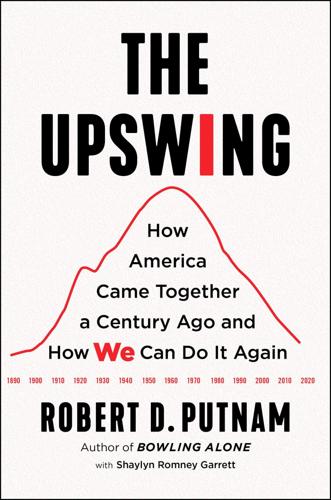
The Upswing: How America Came Together a Century Ago and How We Can Do It Again
by
Robert D. Putnam
Published 12 Oct 2020
Another way of describing this same pattern is that during the two Gilded Ages of the late nineteenth and early twenty-first centuries, men and women were less likely to marry and especially unlikely to marry outside their own social class, whereas at the peak of family formation in the 1950s and 1960s they were more likely both to marry and to marry outside their social class. Thus far we’ve focused on trends in marriage, but how about trends in parenthood? Measuring and accounting for trends in birth rates is a notoriously complex statistical task, as very long-term trends (the so-called “demographic transition” from high to low birth rates that typically accompanies industrialization) interact with short-term effects (like the reductions in birth rates associated with wars or cyclical economic upheaval).124 Leaving aside nonmarital births, lower and later rates of marriage directly produce lower birth rates, so the ups and downs of marriage that we’ve already explored should be expected to have left some mark on American birth rates over the last century, and they have.

Equality
by
Darrin M. McMahon
Published 14 Nov 2023
And by putting bonobo-like women more on top, we would be giving a whole new meaning to the reverse dominance hierarchy.37 But the truth is that when it comes to family arrangements, human beings are neither bonobos nor chimpanzees (still less gorillas). Pair bonding is one of the things that make us distinctive—there is no parallel for it among the apes. And although polyandry (just like polygyny) can certainly arise under certain environmental conditions—most notably in societies with low birth rates or a shortage of women—even there, the unions tend to be tight. A woman with two mates is in effect living in two pair-bonds, a pair of a pair. In the majority of cases, though, one was probably enough. And among our hunter-gatherer ancestors, that way of pairing off was probably the norm.38 That doesn’t mean that women in those groups were the playthings of powerful men.

Blueprint: The Evolutionary Origins of a Good Society
by
Nicholas A. Christakis
Published 26 Mar 2019
It is interesting that exogenous events such as weather can have an impact on social structures in animals, here via the mechanism of synchronizing reproduction and aligning birth cohorts. 112. L. Weilgart, H. Whitehead, and K. Payne, “A Colossal Convergence,” American Scientist 84 (1996): 278–287. Elephants and whales also share the qualities of large size, longevity, low birth rates, and communal care of offspring. 113. Whiten et al., “Cultures in Chimpanzees.” 114. B. Kenward et al., “Behavioural Ecology: Tool Manufacture by Naïve Juvenile Crows,” Nature 433 (2005): 121. Regional variation in the shape of crow tools may also reflect cumulative cultural evolution. 115.
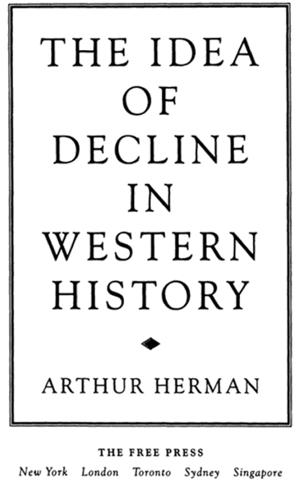
The Idea of Decline in Western History
by
Arthur Herman
Published 8 Jan 1997
.* However, they turned to the language of science, rather than to vitalist power and racial myth, to explain what had happened. Fear of la France dégénerée (the title of an anonymous pamphlet from 1872) permeated debates on every aspect of social policy, including alcoholism, illegitimacy, crime, and low birth rates, as well as political corruption. The result was an orgy of national self-examination and reproach, in which both Morel and Lombroso were applied indiscriminately to explain why France was supposedly on the brink of moral and cultural collapse.24 The historian Hippolyte Taine, for example, was a great admirer of Lombroso.

The Dreaming Void
by
Peter F. Hamilton
Published 1 Jan 2007
Right at the beginning of Higher culture, when biononics became available and ANA went online, the average citizen’s age was already the highest in the Commonwealth. The elderly downloaded, and the younger ones who were not ready for migration to a postphysical state emigrated out to the Central worlds until they chose to conclude their biological lives. The result was a small residual population with an exceptionally low birth rate. The Delivery Man and Lizzie were a notable exception in having three kids. But then, they had registered a marriage as well and had had a ceremony in an old church with their friends witnessing the event; a Christian priest had been brought in from an External world that still had a working religion.

The Rise of the Network Society
by
Manuel Castells
Published 31 Aug 1996
In close interaction with the cultural and professional emancipation of women, the development of reproductive rights has altered the demographic structure and biological rhythms of our societies in just two decades (see tables 7.4 and 7.5). Overall, the most industrialized countries have entered an era of low birth rates (below the reproduction rate for the native population), of delayed time for marriage and reproduction, and of variable stages for women to have children throughout their life-cycle, as they strive to combine education, work, personal life, and children in an increasingly individualized pattern of decision-making (see table 7.6).

Capitalism and Its Critics: A History: From the Industrial Revolution to AI
by
John Cassidy
Published 12 May 2025
In an 1894 article on immigration, Ely said Americans should “ponder well the effects which a large admixture of baser foreign elements is likely to have upon American nationality.”20 In a 1901 address, the sociologist Edward A. Ross, who had studied under Ely at Johns Hopkins, suggested that low birth rates among white Anglo-Saxon Americans could mean that “the higher race quietly and unmurmuringly eliminates itself,” a phenomenon he referred to as “race suicide.”21 Veblen had an enduring fascination with ethnology and race, but he didn’t embrace this thesis. He was skeptical of any simplistic argument, including the effort by some Social Darwinists to equate the rise of capitalism with the survival of the fittest.
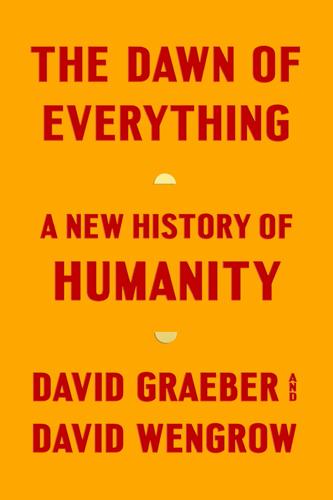
The Dawn of Everything: A New History of Humanity
by
David Graeber
and
David Wengrow
Published 18 Oct 2021
Earthworks and homesteads were both things of the past, and the Southeast came to be divided among tribal republics, of the sort familiar from early ethnography.53 A number of factors made this possible. The first was demographic. As we’ve noted, North American societies were, with few exceptions, marked by low birth rates and low population densities, which in turn facilitated mobility and made it easier for agriculturalists to shift back to a mode of subsistence more oriented to hunting, fishing and foraging; or simply to relocate entirely. Meanwhile women – who in one of Scott’s ‘grain states’ would typically be viewed by the (male) authorities as little more than baby-making machines, and when not pregnant or nursing to be engaged in industrial tasks like spinning and weaving – took on stronger political roles.

Growth: From Microorganisms to Megacities
by
Vaclav Smil
Published 23 Sep 2019
During the earliest stage of demographic transitions, the death rate begins to fall, in some cases relatively rapidly (as a result of better nutrition and better health care), while birth rates remain at traditionally high levels and this combination results in high rates of population growth (commonly in excess of 1%, that is an order of magnitude higher than in pretransition societies). Eventually birth rates begin to fall as well (and, again, rather precipitously in some cases) and population increase decelerates. A society that has undergone a demographic transition finds itself at a new equilibrium as low birth rates and low death rates result in low natural increases, or even in no growth and absolute population decline. The process of demographic transition began first in European countries, where it took up to two centuries. For example, Finland’s crude death rates fell from about 30/1,000 people in 1750 to 10 in 1950, while during the same two centuries crude birth rates declined from more than 40 to just over 20; while Swedish birth rates stayed between 30 and 35 until the early 1860s, death rates began to decline from their longstanding rates of 25–30 after 1820, and both rates were lowered to just above 10 by the late 1970s (CSO 1975).

Bourgeois Dignity: Why Economics Can't Explain the Modern World
by
Deirdre N. McCloskey
Published 15 Nov 2011
Yet if on account of Adam Smith’s hoped-for “universal opulence which extends itself to the lowest ranks of the people” all have access to excellent education—which is a proper subject for social policy—and if the poor are so rich (because the Great Enrichment) that they too have fewer children, which is the case, then the tendency to rising variance will be attenuated.12 The economist Tyler Cowen reminds me, further, that “low” birth rates also include zero children, which would make lines die out—as indeed they often did, even in royal families, well nourished. Nonexistent children, such as those of Grand Duke of Florence Gian Gastone de’ Medici in 1737, can’t inherit either financial or human capital. And the effect of inherited wealth on children is commonly to remove their ambition, as one can witness daily on Rodeo Drive, or in Bettencourt’s daughter.

The Pursuit of Power: Europe, 1815-1914
by
Richard J. Evans
Published 31 Aug 2016
Nearly a sixth of the entire population of Greece emigrated between 1890 and 1914, either to America or to Egypt. European states with overseas empires, from Britain and France to Portugal and the Netherlands, also witnessed extensive waves of emigration. The major exception was France, where the low birth rate and the security of land tenure kept people in the home country. Altogether some 60 million people are thought to have left Europe between 1815 and 1914: 34 million for the USA, 4 million for Canada, and maybe a million for Australia and New Zealand. Between 1857 and 1940, 7 million Europeans left for Argentina, and between 1821 and 1945, 5 million for Brazil.

Germany Travel Guide
by
Lonely Planet
After reunification, the foreign population soared again as repatriates from the former USSR and refugees from war-ravaged Yugoslavia arrived by the millions. Whether immigration enriches or endangers German culture has been the subject of much debate in recent years, but the fact is that the country needs newcomers to keep the economy running. An ageing population and low birth rate account for the fastest population decline among developed nations. Like many other industrialised nations, Germany may have to adapt its outdated laws and policies on controlled immigration on a much larger scale than ever before. DOS & DON’TS »Do say ‘Guten Tag’ (hello) when entering a business »Do state your last name at the start of a phone call »Don’t be late for meetings and dinners »Don’t assume you can pay by credit card »Do bag your own groceries in supermarkets »Do bring a small gift when invited for dinner TOP READS Grimms’ Fairy Tales (Jacob & Wilhelm Grimm; 1812) The classic!